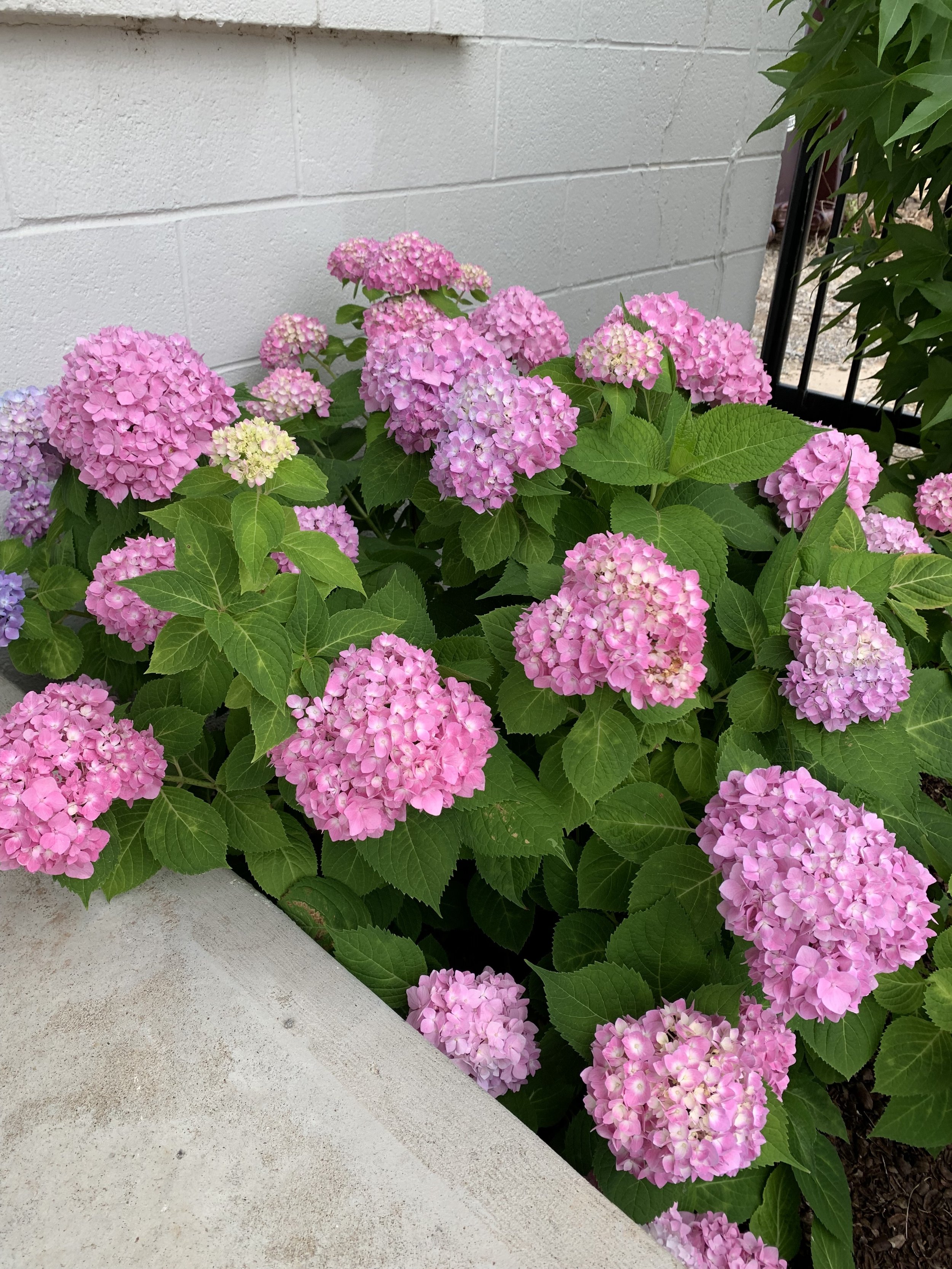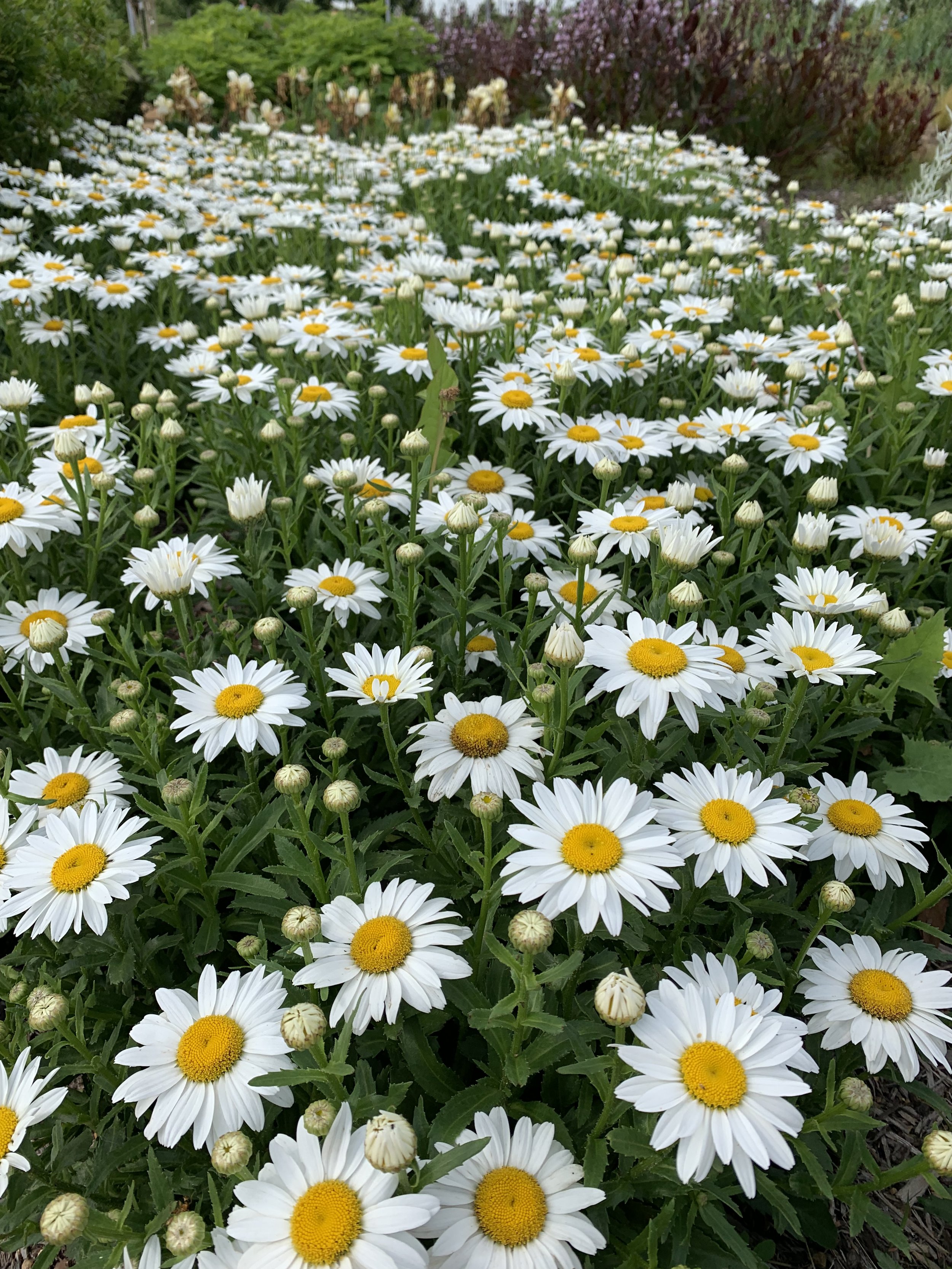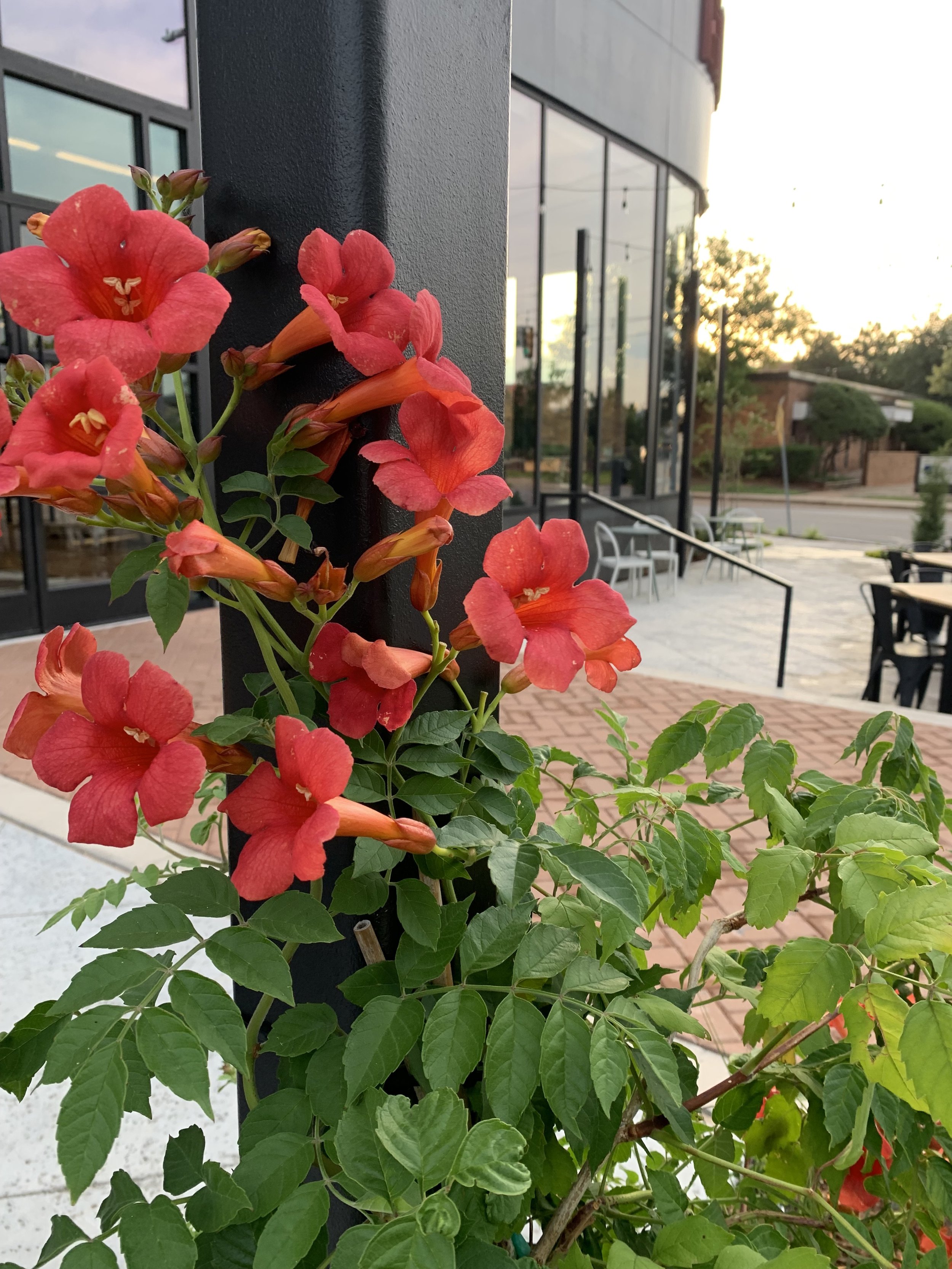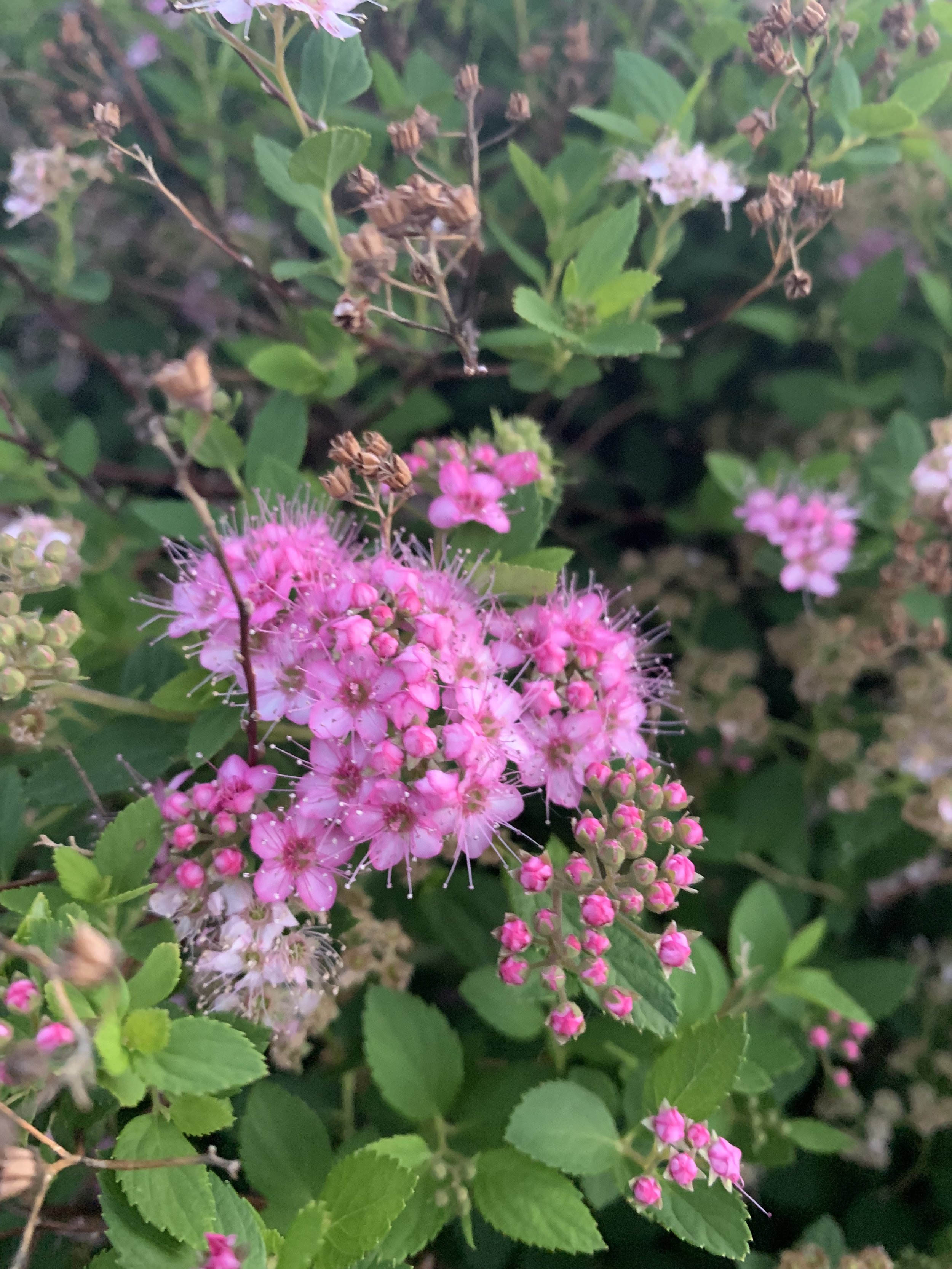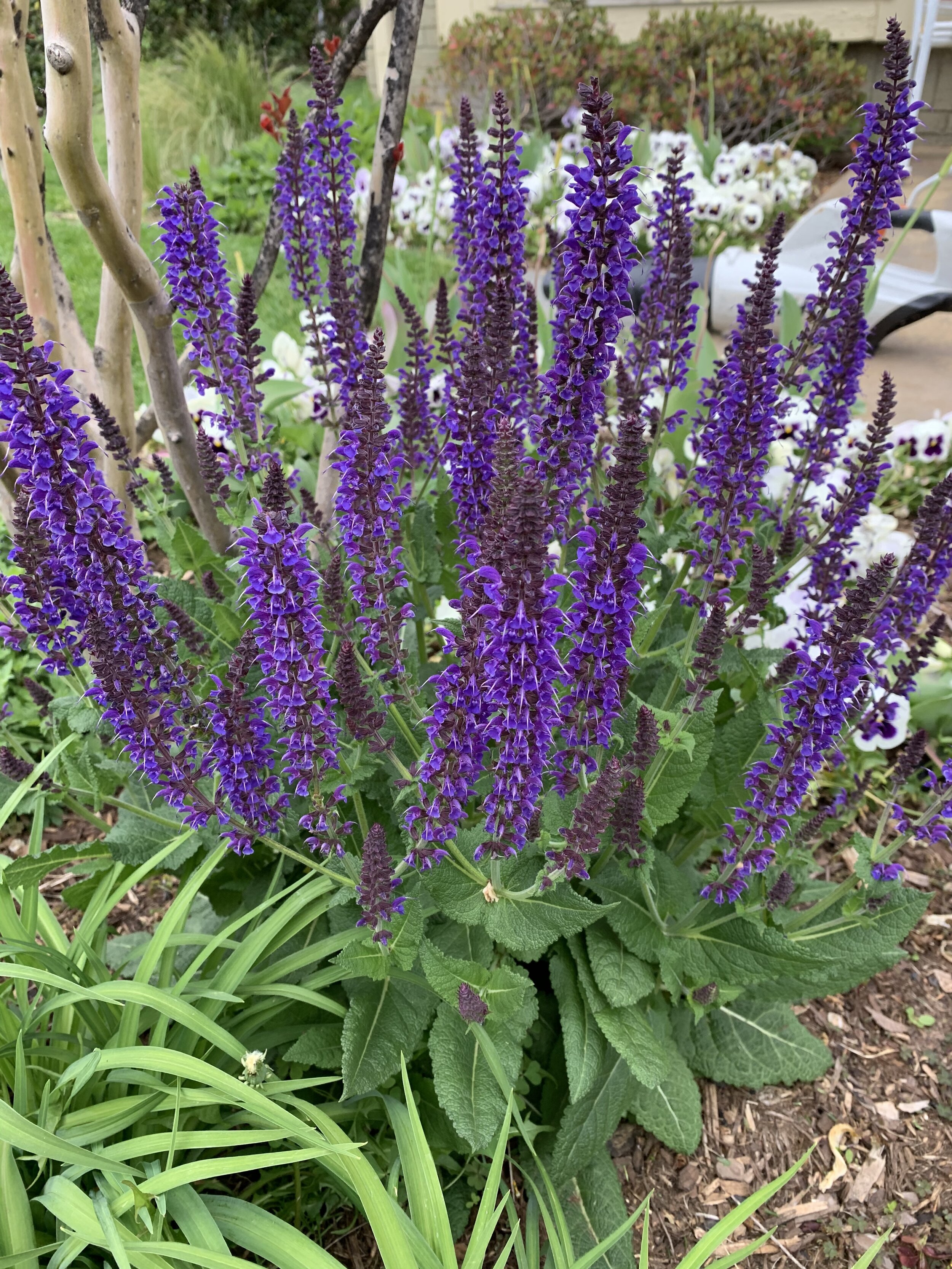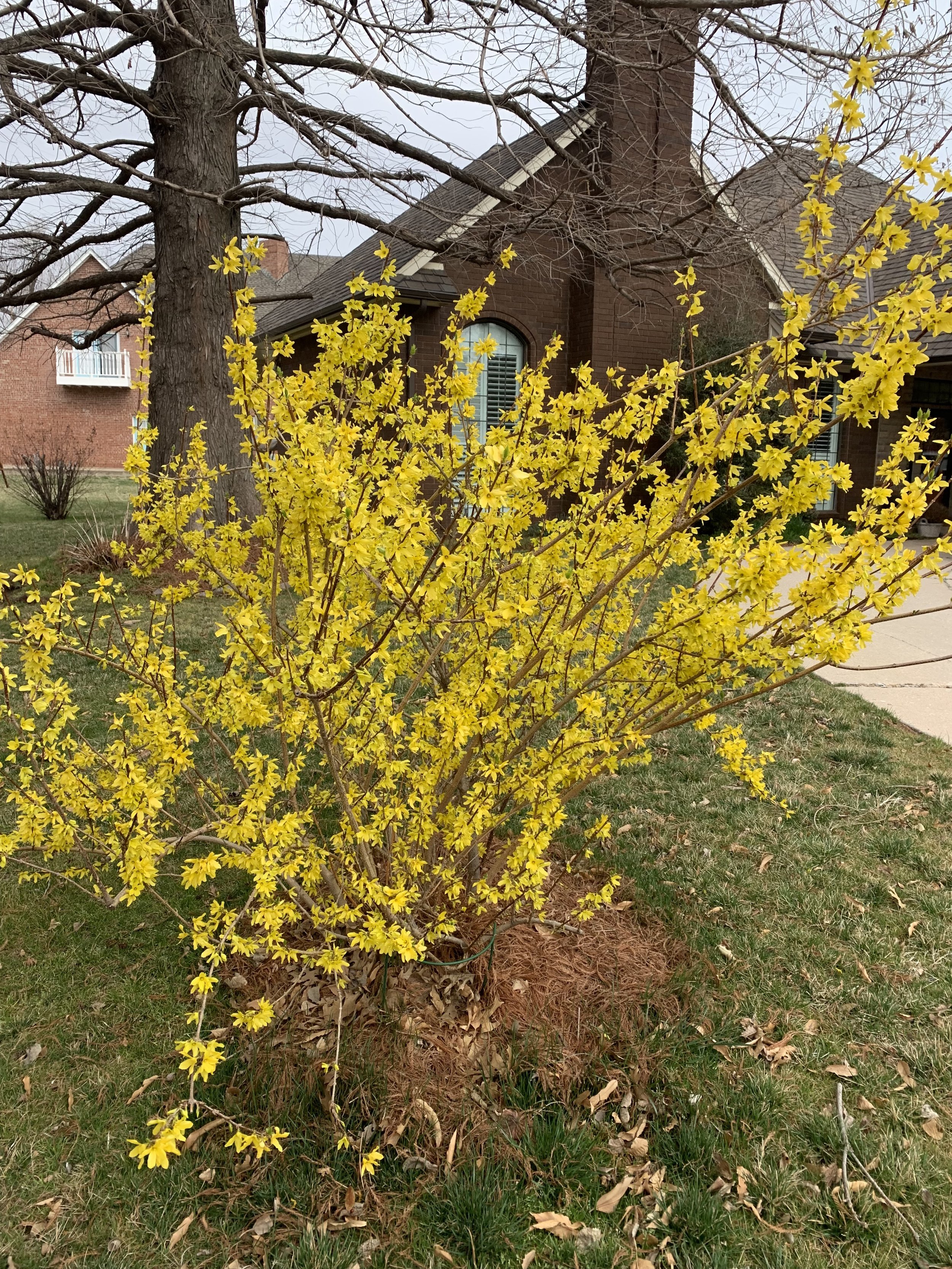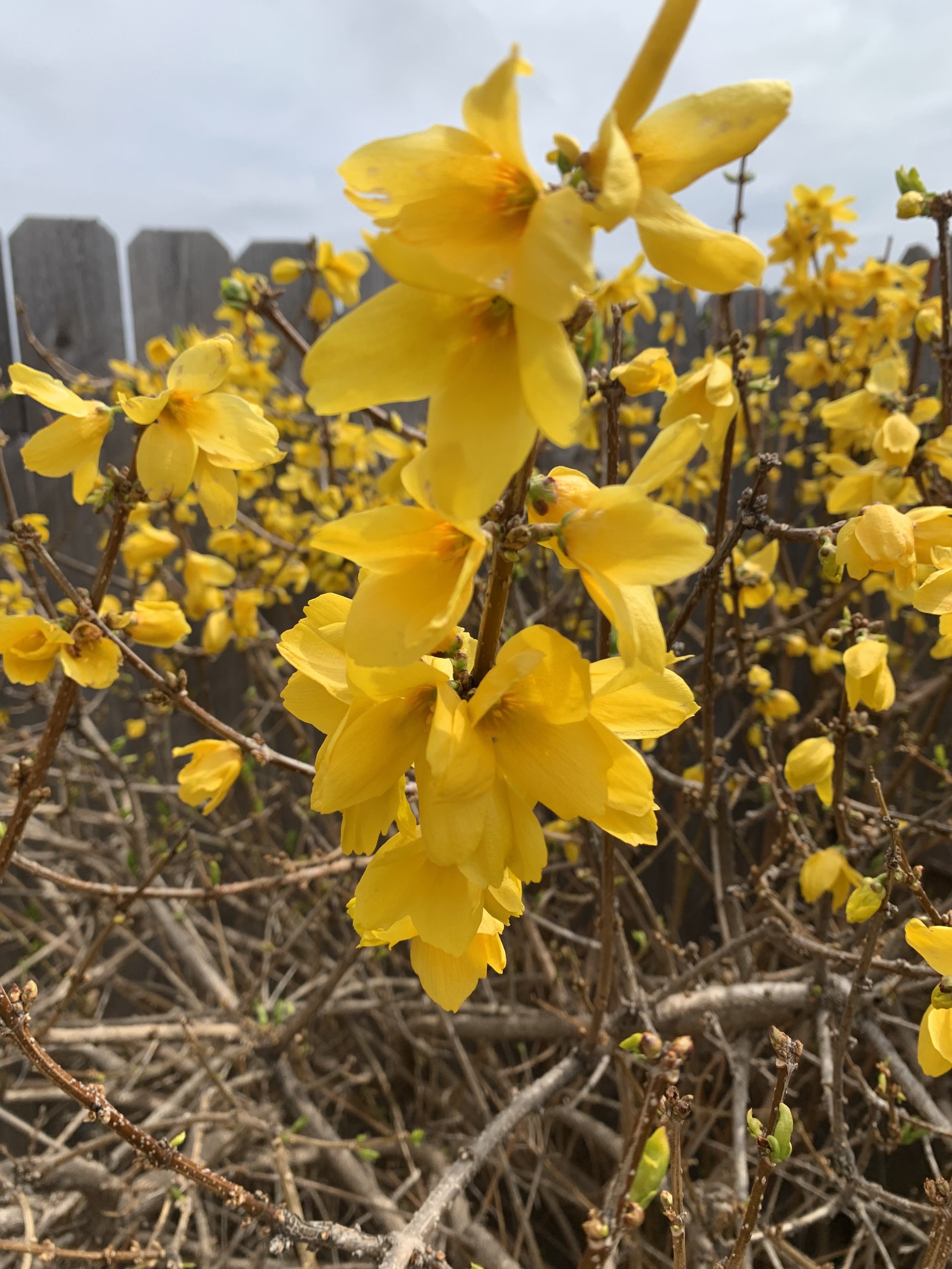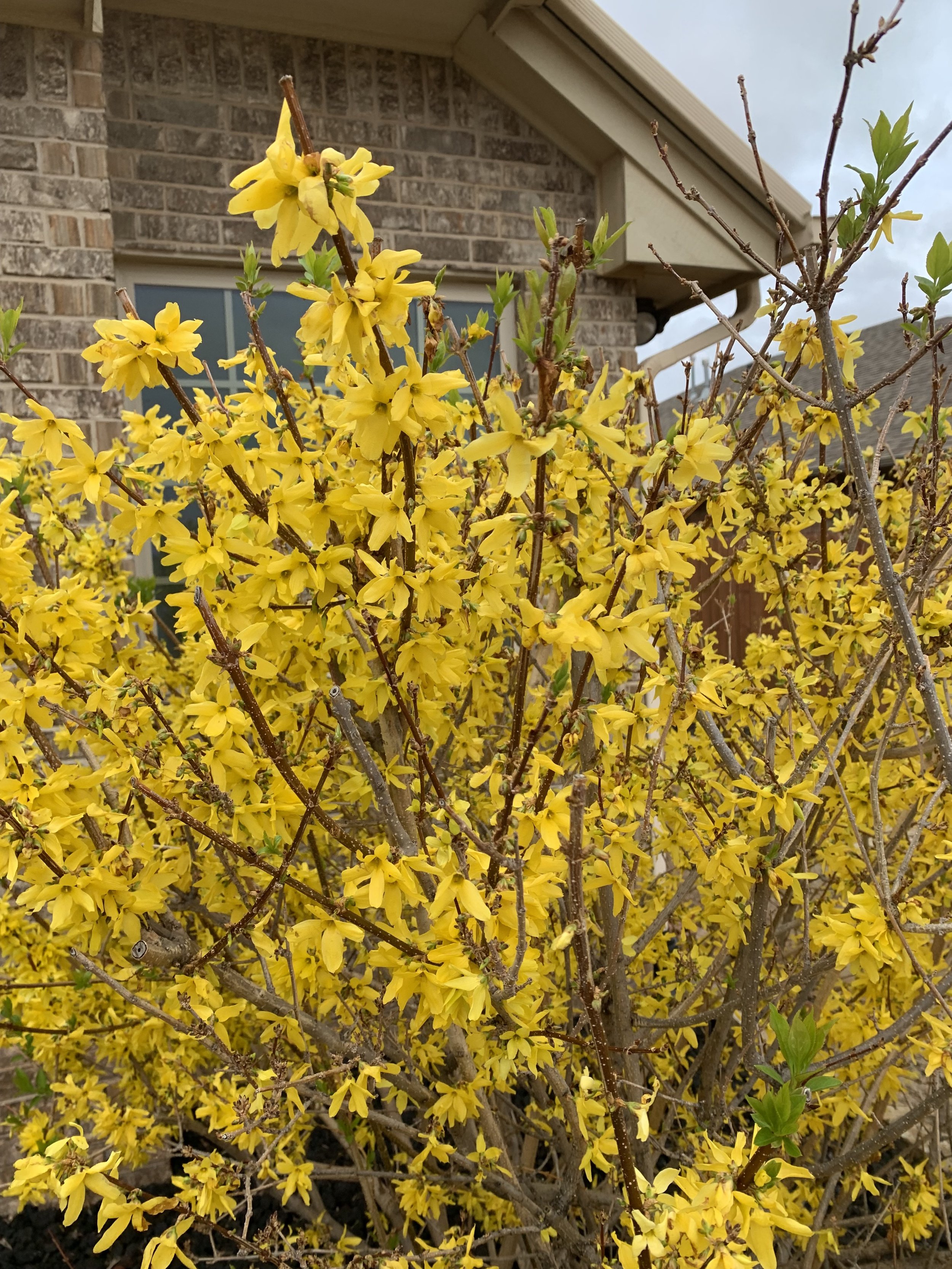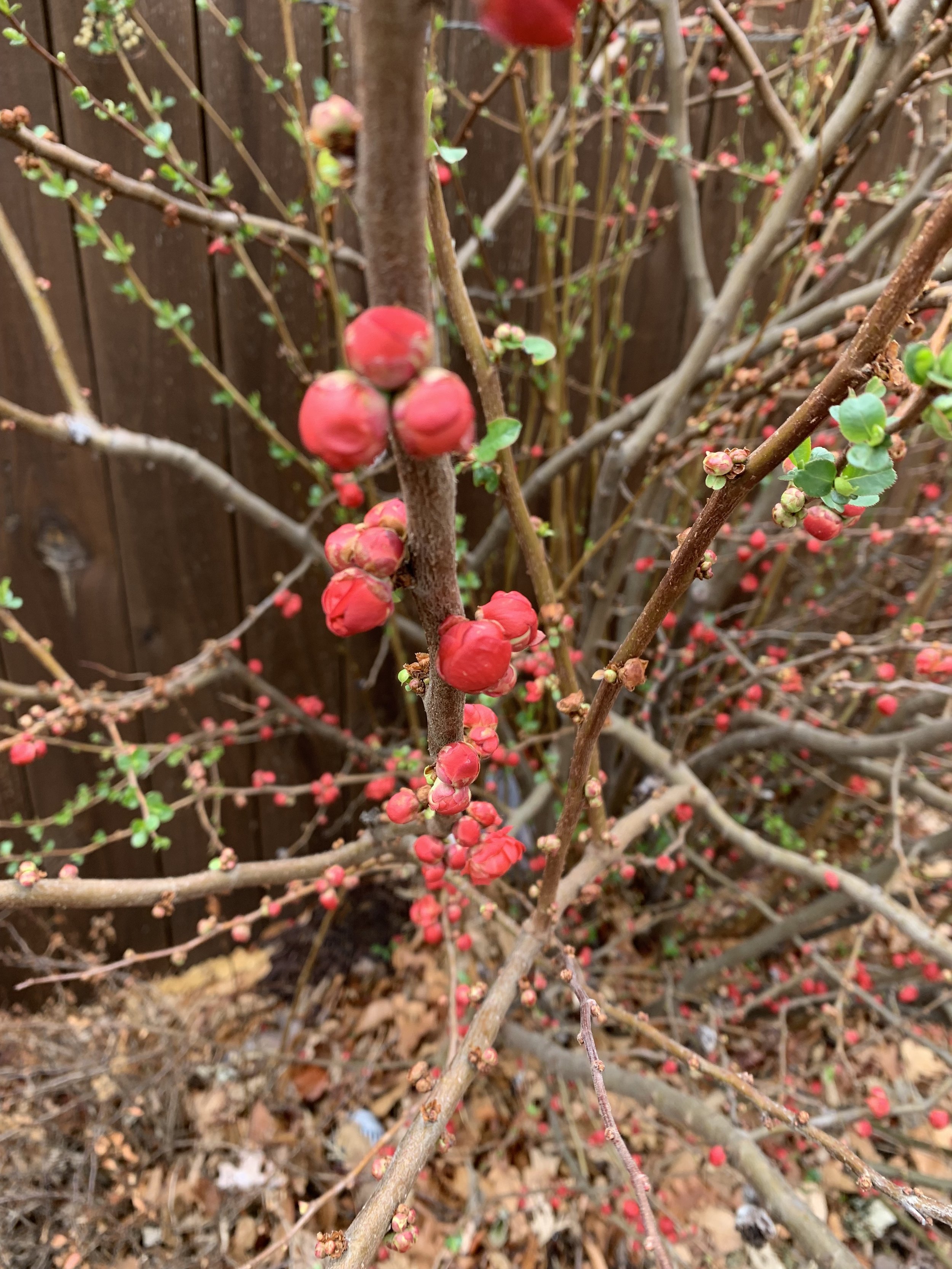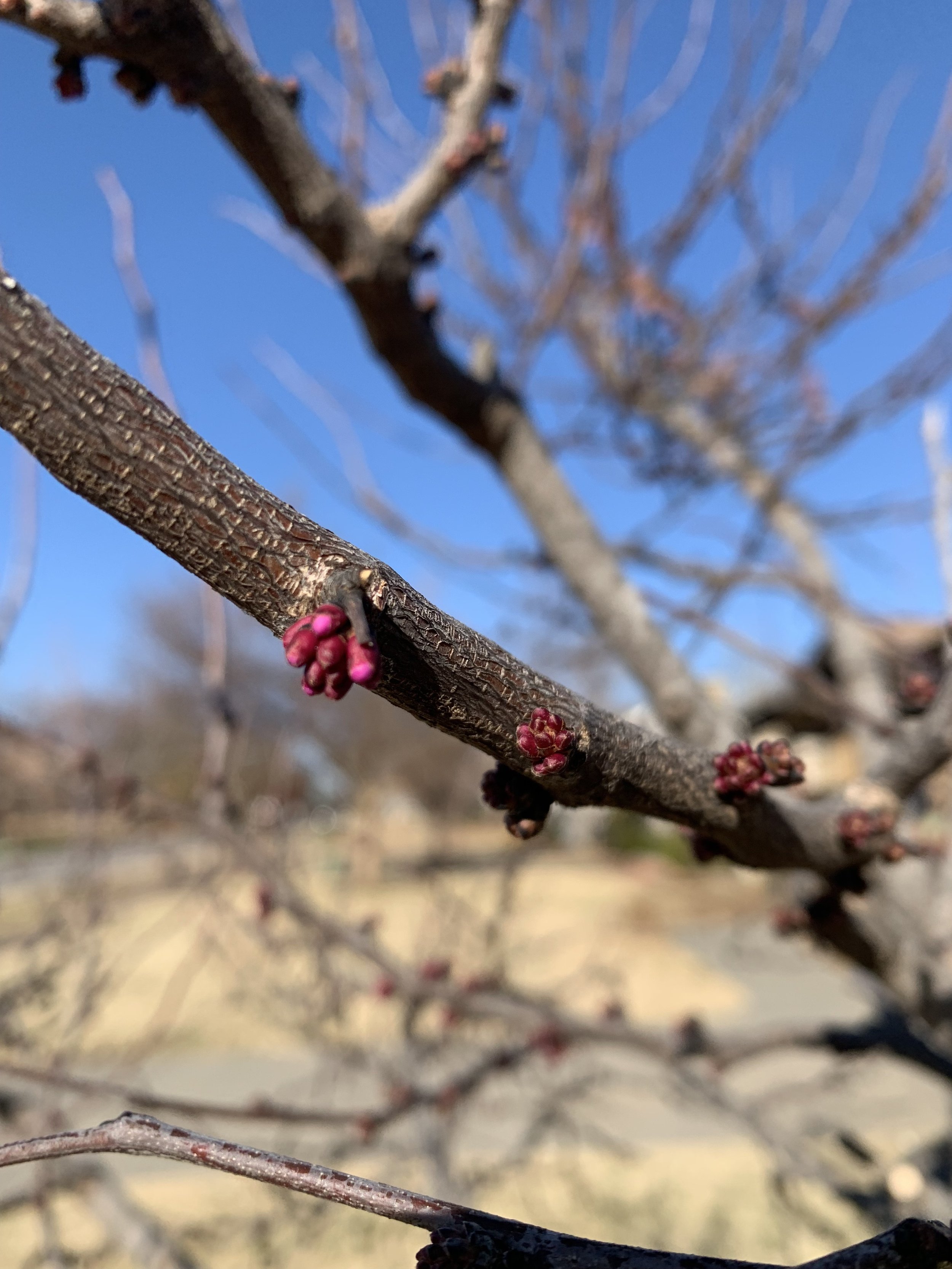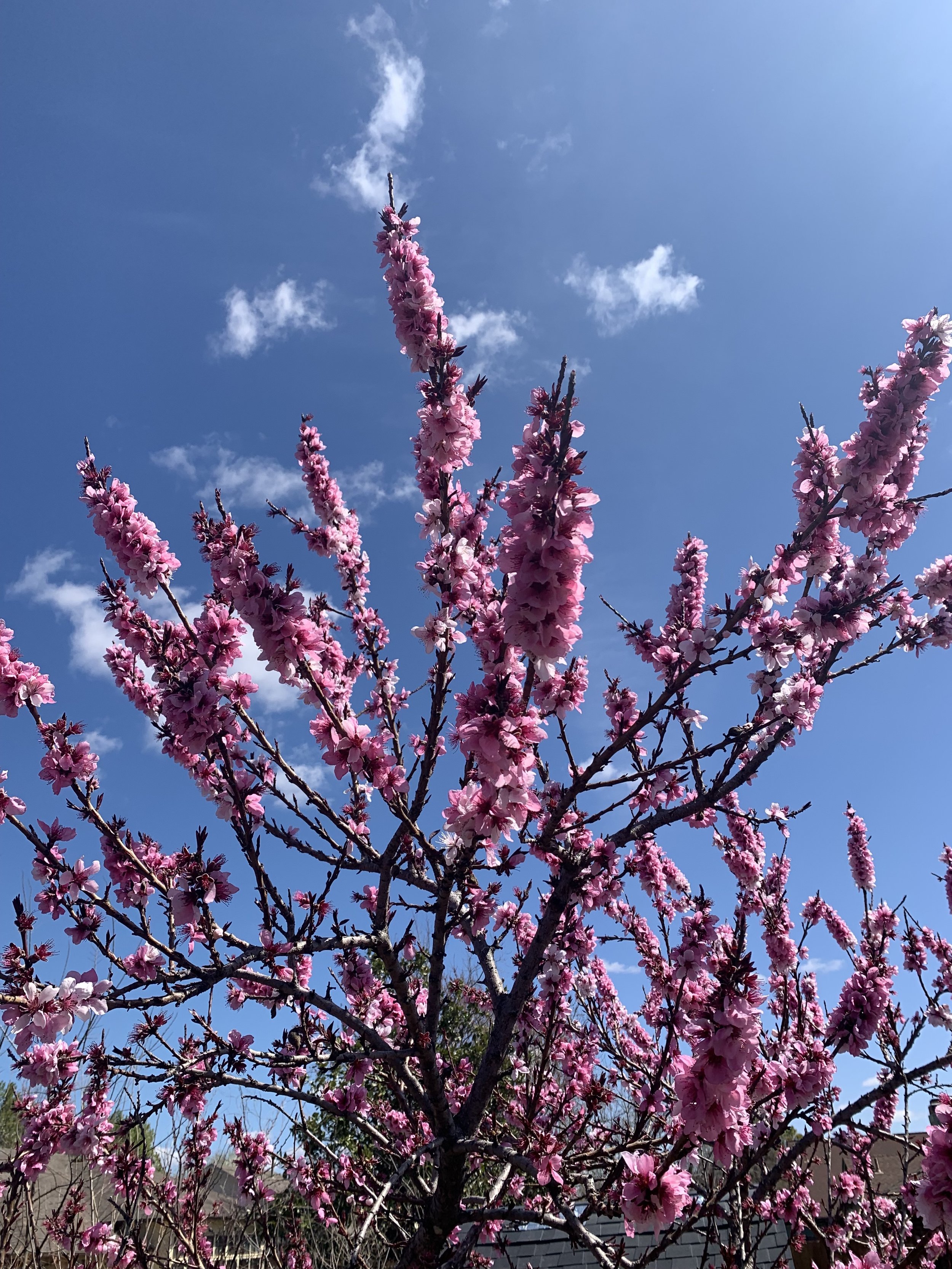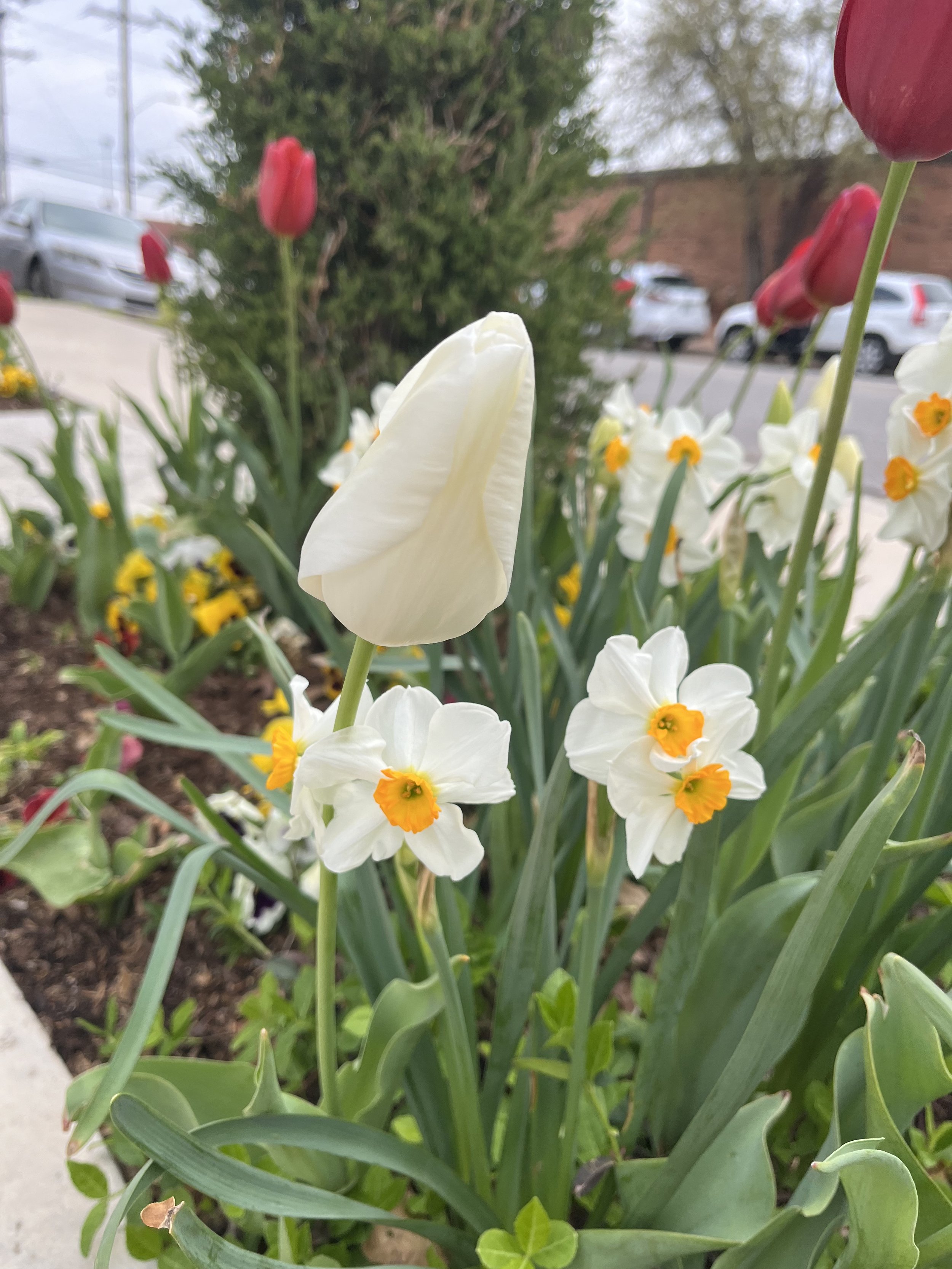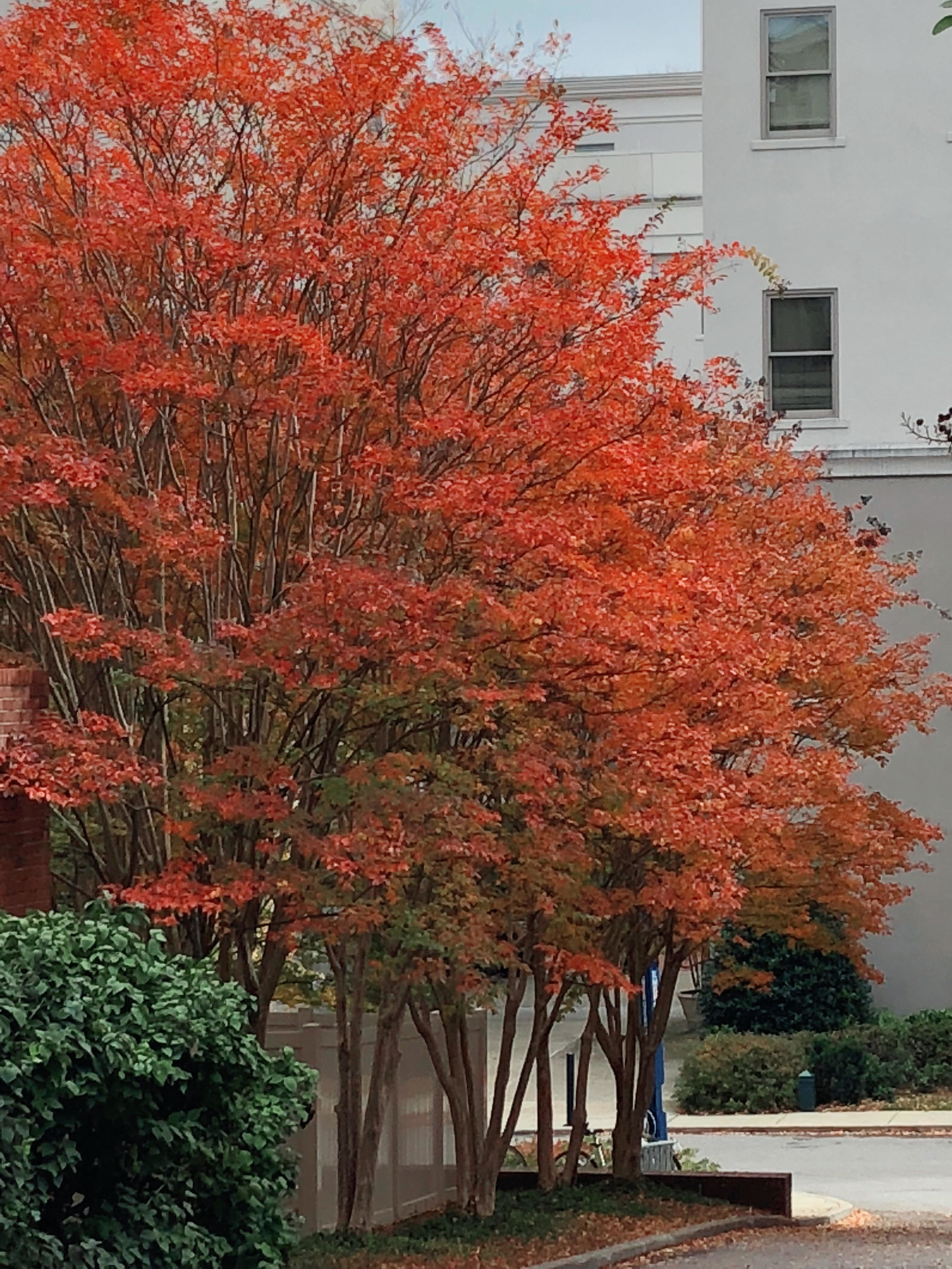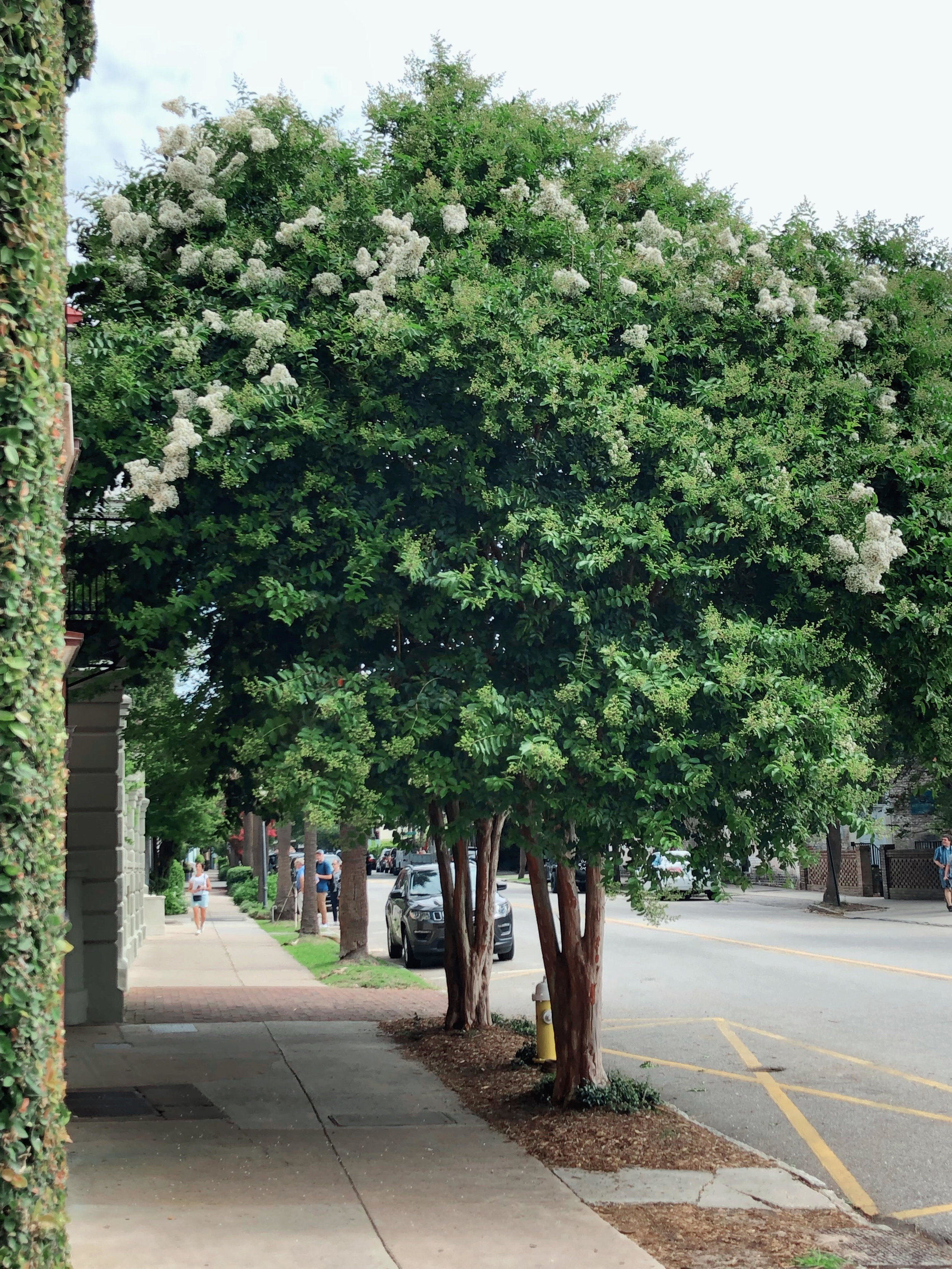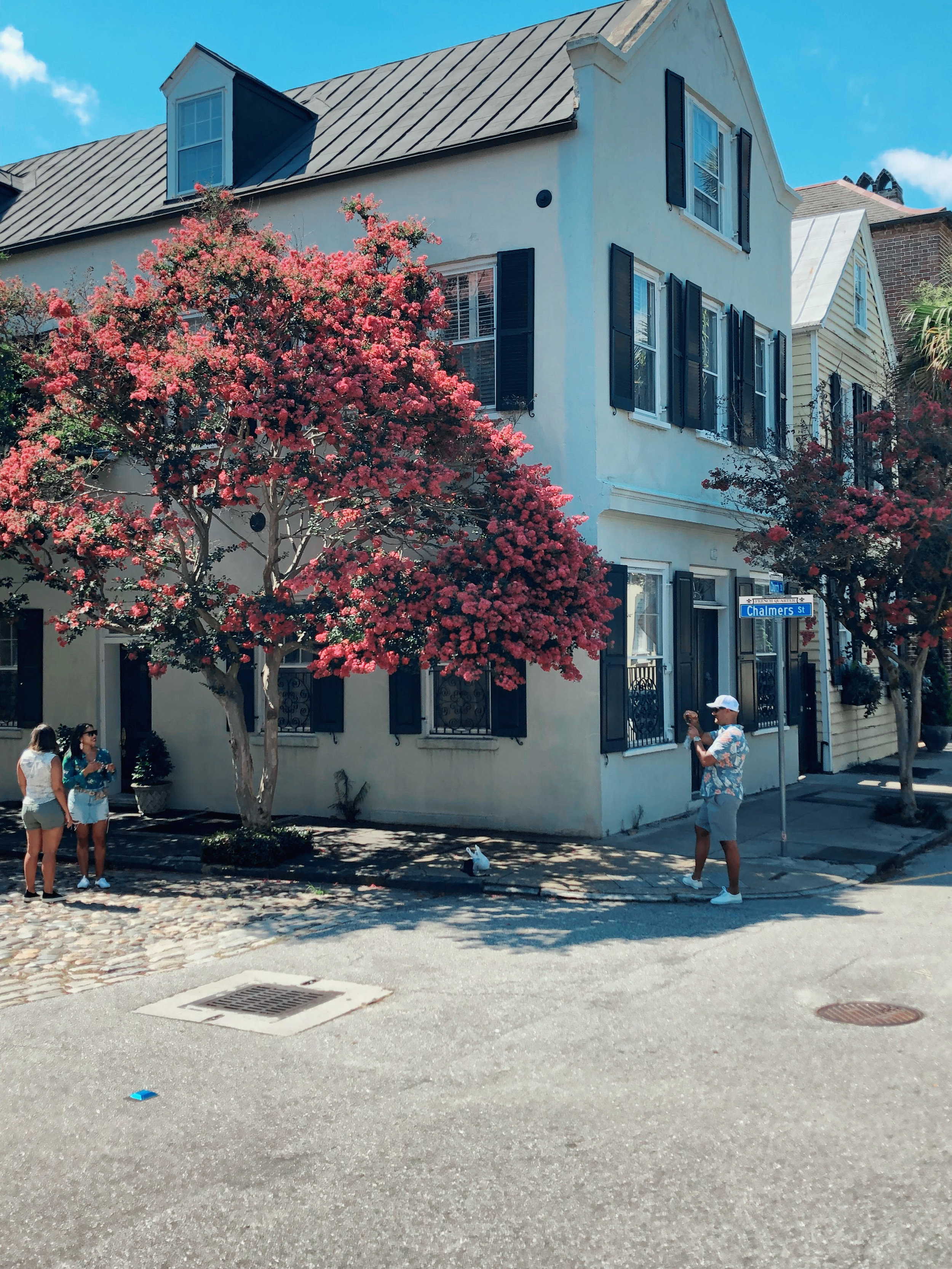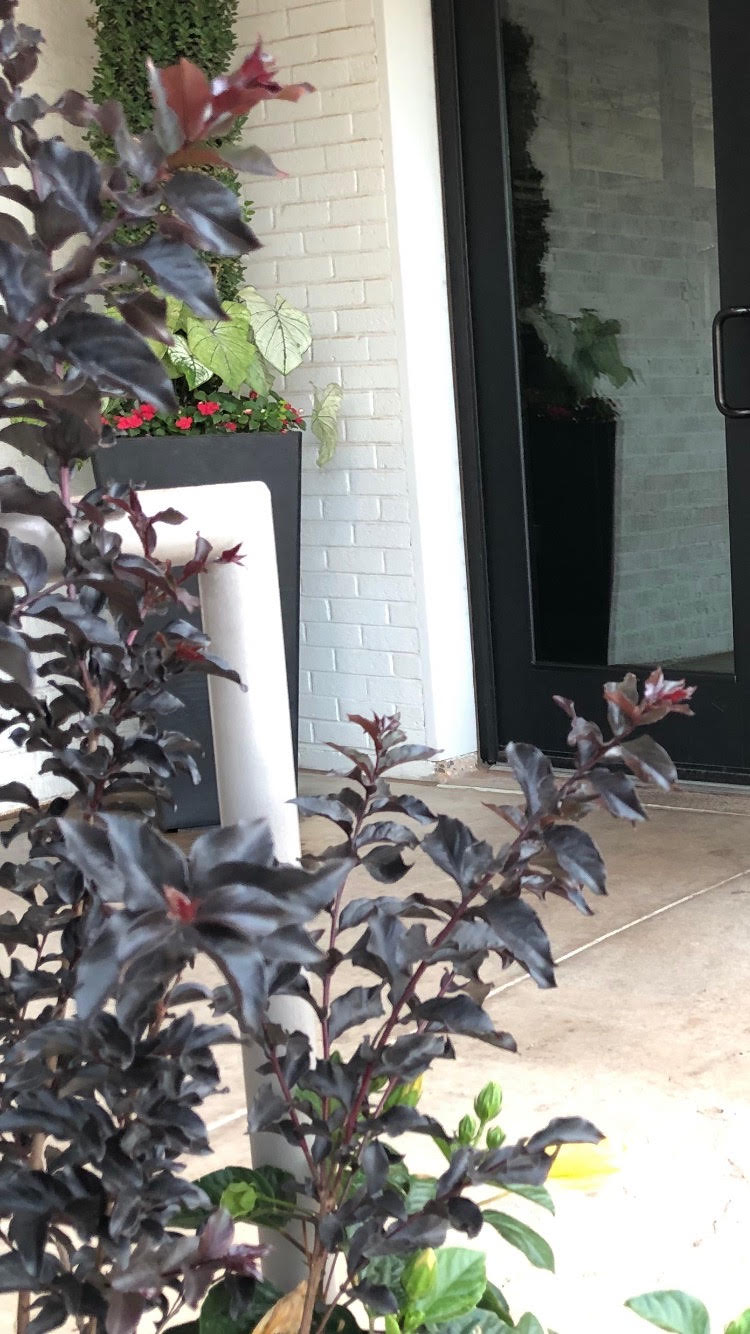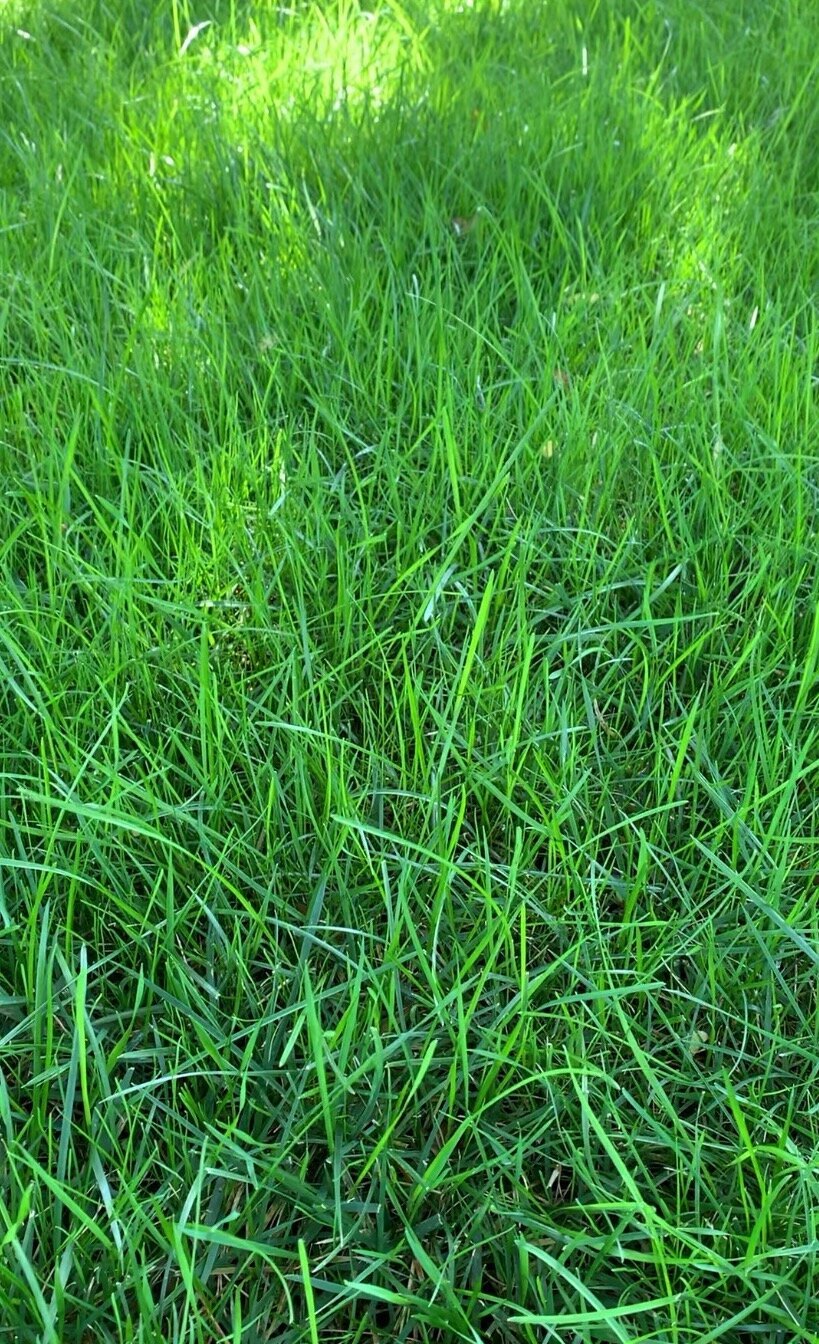
June Lawn & Landscape Tips
Hello Summer!
June… a magnificent month for your lawn and landscape!
June is the month when both cool season and warm season turf look great.
June is the month when an abundance of perennials add color to the landscape.
June is the month when shrubs are covered with soft, tender new foliage and so many blooming shrubs are adding splashes of color.
June is the month summer blooming trees start adding color to our world.
June is the month to discover a new favorite tree, shrub, perennial or summer annual color. What will be your favorite this June?
Awe…June is the month when all your lawn and landscape work this spring rewards you with enjoyable evenings on the patio.
Wait…don’t get too comfortable, it is summer, and your lawn and landscape still need attention:
June is the month for day lilies to add splashes of color to the landscape.
Mowing
Good mowing practices will have the biggest impact on the quality of your lawn over the summer months. For the best summer turf, get into a routine of mowing often enough that you only remove 1/3 of the leaf blade with each mowing. For bermuda and zoyia, both warm season turfgrasses, this may require mowing every 4 to 5 days. If you mow this often, don’t bag your clippings. The top 1/3 of the grass leaf is 90% moisture and nutrients. The best summer height for warm season turf is 1.5 – 2.5”. Fescue, cool season turfgrass, will continue to grow rapidly during early June but once we consistently have temperatures in the upper 90’s it will begin to slow down. The best height for cool season turf in the summer is 3.0 – 3.5”. Both warm season and cool season turfs don’t respond well to being cut below their recommended height. Cutting the lawn too short discourages root development and having deep roots going into the summer heat is important for both warm and cool season turf.
Increase the mowing height on fescue lawns to 3” to 3.5” inches June and maintain that height through the summer.
Fertilizer
Bermuda lawns should be fertilized this month with a higher nitrogen, slow-release fertilizer. The goal in June is to create a healthy bermuda lawn that will thrive in the summer heat. Fescue lawns should only receive low nitrogen, root stimulating fertilizer during June to prepare them for the summer heat.
One of the biggest concerns we have for fescue lawns right now is too many are being cut too short. Cool season lawns will do better in the summer heat with more leaf space. If you have a fescue lawn, gradually raise your mower to at least 3” this month. I started mowing my fescue lawn a ½ notch higher in May and will increase it another ½ notch this week.
Endless Summer Hydrangea are gracing the landscape with their first blooms for the summer.
Weed Control
If you subscribe to Hall | Stewart’s Lawn Care Programs and have not skipped any applications this year, your lawn has had two pre-emergent applications. This will provide your lawn with a good barrier to prevent summer annual grassy weeds. But, if not, you may have some grassy weeds, the most common is crabgrass, showing up in your lawn. June is a good month to control grassy weeds while they are still young plants. Once they mature, stronger products will need to be used which can cause turf damage. If nutsedge is making an appearance in your lawn, it is best not to pull it. When you pull nutsedge and do not remove the nut below the surface, the plant becomes stressed and multiplies.
You can expect to see Black Eyed Susans, a perennial brighten the landscape this month.
Crabgrass is a very fast growing summer annual grassy weed. If you did not get a pre-emergent on your lawn early this year, you are almost certain to have crabgrass growing in your lawn. Treat now with a grassy weed control herbicide. If you wait until July to control, harsh products that will damaged desirable turf will have to be used.
Tree & Shrub Care
The best thing you can do for your trees and shrubs this month is give them your attention. Make it a routine to walk around the landscape looking for plants that just don’t look their best. Most insects are great at camouflage and are hard to spot before you have damaged leaves. Start watching for spider mites. If you notice pale and specked foliage, shake the leaves over a white sheet of paper. If you see tiny specks that start to move, you have spider mites and should schedule a treatment. Be on the watch for bagworms on needle evergreens. When they are young, they are hard to spot. If you notice your evergreens losing color, there is a good chance bagworms are the problem. With all insect and disease issues we subscribe to an integrated pest management approach. With our Tree & Shrub Program, we inspect for issues with each visit. Most problems are easier to control the earlier you notice them. If you notice any issues with your plants, please let us know.
If you notice pale or speckled foliage on boxwood shrubs, shake a branch over a white paper. If you see tiny specks that start to move, you need to spray for spider mites.
As temperatures warm up in June be on the lookout for aphids.
Soft scale can be a problem on Redbud trees. A small 1/16-1/8”, reddish, oval scale that is often found on small twigs and can cause small branches to die if not treated. A treatment plan in late winter with a dormant oil with follow-up treatments in late spring and early summer with a horticultural oil is required.
The lacy blooms of June are a wonderful contrast to the big leaves of the Oak Leak Hydrangea.
I’m always on the look out for new landscape plant materials. This year we have planted a few Orange Rocket Barberry. Typically Barberries have an oval or spreading growth pattern. But the Orange Rocket is known for its upright, compact growth habit.
June is the month an old fashion plant, Rose of Sharon, shows us why we should add tried and true plants to our landscapes.
Bag worms start out small and hard to see. Take time to inspect your needle evergreen shrubs this month.
Do your landscape a favor and keep an eye out for bagworms. They are much easier to control when applications are made early.
Bagworms start out very small and are hard to see. Take time to inspect your needle evergreens before they cause damage.
Annual Color — Sunpatien and Joseph’s Coat
Endless Summer Hydrangeas will make their first big burst of color this month.
Shasta Daisies, a perennial, will bloom from early June through mid-summer. They make great cut flowers.
Who can’t help but fall in love with Oakleaf Hydrangeas at this time of year. Their brilliant large flowers demand attention.
Later this month Mimosa trees will add bright pink, feathery flowers to the landscape.
Shrub Pruning
June is the last month to prune spring blooming shrubs. Spring blooming shrubs start setting flower buds by mid-summer. A few examples of spring blooming shrubs: forsythia, quince, bridal wreath spirea, and azalea. If the shrub is overgrown, use thinning cuts to reduce the size and increase air flow into the center of the plant. Make thinning cuts by removing branches back to the main trunk or another branch. If the shrub only needs a little shaping, make heading cuts near the end of branches. But, remember that all shrubs will perform at their best if they are allowed to grow without heavy pruning or shearing.
Planted in mass Stella D’oro Daylily’s add bright splashes of yellow to the landscape during June.
If your Azaleas have become overgrown or need shaping, June is your last chance to prune them before they start setting buds for next spring.
Our longest blooming plant, the Crape Myrtle, will start its summer long show this month.
Watering
“How much to water” may be one of the most misunderstood aspects of managing a lawn and landscape. Develop the practice of watering based only on need. During the summer months, anytime we get a ½” rain or more, turn your system off for a few days. Depending on afternoon temperatures, a 1” rainfall may save you a week’s worth of water. The converse is true as well. If we go a week without receiving a 1” of rainfall, you need to be watering. Another clue it is time to start watering… when you walk on the lawn, if the grass doesn’t spring back up and your footsteps remain in the lawn, it is time to start watering. Remember, deep soakings are always better than short, frequent watering. Shallow, frequent watering results in lawns with less roots and more dependent on water. Throughout the summer make it a habit to inspect your landscape and adjust. Don’t set your irrigation controller at the beginning of the season, never touching it again until the fall.
Trumpet Vine
By mid month Limelight Hydrangea and Hibiscus will be adding big blooms to our landscapes.
Mulch
Add mulch to your landscape plantings this month. A 2” layer of mulch will retain moisture, cool the soil, and reduce weed germination. We prefer premium shredded all bark cedar mulch because it doesn’t float as much and aesthetically looks great. For acid-loving plants such as hydrangeas and azaleas, pecan hulls or pine bark mulch is a great choice.
Endless Summer Hydrangea
Goldflame Spirea
Annual color planting of Joseph Coat, Sunpatien, and Marigold make a great yellow/orange color scheme.
Hardy Hibiscus
Brown Patch
Be on the lookout for brown patch in your fescue lawn. June is the most active month for this disease in fescue lawns. Anytime nighttime temperatures are 70 plus and the turf remains damp for over 6 hours at a time, brown patch will develop. Areas where there is little air movement and/or heavy shade are more prone because the turf stays wet longer. Brown patch will make the lawn appear it needs more water, but watering will just make it worse. So, before you water more, think about the site, the amount of shade, the air movement in the area, and the amount of moisture the area has received. The best thing you can do if this problem occurs is to stop watering.
One of the most self-inflicted problems with fescue lawns is watering practices that promote the development of brown patch. Always allow your fescue time to dry out between waterings. Avoid watering fescue in the evening during the summer.
If you subscribe to Hall | Stewart’s 7-Step Lawn Care Program and have fescue, you will receive a fungicide this month designed to suppress the brown patch fungus.
Brown Patch will make fescue look like it needs more water, but the problem is actually the result of the leaf blades staying wet for over 6 hours at a time when nighttime temperatures are in the 70s.
There are many varieties of Spirea’s with yellow and green foliage that put on blooms in the early summer.
Crape Myrtle
Yarrow is a perennial that produces yellow flowers in late May and early June.
Also, Cone Flower, another summer perennial will make a showing in June.
Oakleaf Hydrangeas with their lacy white blooms and large oak shaped leaves put on a show from late May through mid June.
Anthony Waterer Spirea is a medium sized shrub that is covered with pink flowers in late May and early June.
Aeration
Mechanical aeration is a “best” practice for any lawn. Aeration reduces soil compaction, promotes root development, and thickens the turf. May and June are the best months to aerate bermuda. This one practice will make a significant difference in the quality of your turf. The stronger the turf, the less weed problems you will experience.
Summer Crush Hydrangeas are a reblooming hydrangea that produces large floral quality blooms in your landscape.
Insects
Regularly scheduled treatments for fleas & ticks, mosquitos, and perimeter insect control around your house should continue during the summer. The goal is to make outdoor living for your family and pets the best possible.
Southern Magnolia trees produce large white flowers in early summer. Teddy Bear and Little Gem Dwarf Southern Magnolia are great plants for smaller landscapes.
Texas Red Yucca produce tall red flowering spikes this month. There are several varieties. Brakelights Res Yucca is a favorite.
Awe…may your June be filled with time outside, in your lawn and landscape, on your patio with family and friends, enjoying the beauty every day!
If you have any questions, please send us an email or call.
Oh, and when you discover something new and exciting in the landscape, don’t keep it a secret, send us a picture!
Lorne Hall
Hall | Stewart Lawn + Landscape
(405)367-3873
The Joy of Spring
What a week in the landscape!
Last weekend didn’t feel like spring. But, with one final, late cold spell in our rear-view mirror, the landscape has exploded with color this week.
The much needed rainfall has delivered us greener turf, more trees adding leaves, colorful perennials, bulbs, shrubs and trees in every pocket of the Oklahoma City metro area.
Every spring feels a little different. The timing of blooms. The length of blooms. Every spring another plant is going to captivate our attention. Every spring there is another plant that just seems a little more dynamic than it has ever been.
What are your favorite spring blooming plants?
Are you like me? Your favorite is, “All of them!”
Let’s spend a few minutes reviewing some of the tried and true spring blooming plants you can count on adding beauty and joy to our world year after year.
PERENNIALS
Creeping Phlox
Creeping Phlox. The first to welcome spring each year. Creeping phlox produces a spring-like carpet in pastel hues of white, lavender, red and pink. Creeping phlox is a moderate grower that can spread up to 2’ but only reaches 4-6” in height. It requires full sun but will tolerate a couple hours of shade each day. Borders, walls, and around boulders are where it looks best. In my garden, you will find it cascading over a rock retaining wall. It tolerates most soil if it is well drained. The plant requires little maintenance. Mites are about the only insect problem it will have.
‘May Night’ Salvia. Sage type flower spikes of deep bluish-purple that will add color in April, May, and early June. The best flower show will be in full sun, but it will tolerate a little dappled shade each day. The plant grows 12-18” tall with flower spikes reaching 24”. The plant looks great in the middle of the garden planted behind creeping phlox or dianthus, and in front of Shasta daisy or Black-eyed Susan. The leaves often become tattered later in the summer and become dormant over the winter. Keep faded blooms removed to maximize bloom period and pruning the plants after blooming may result in a few fall blooms. In the early spring, before new growth emerges, remove the dormant foliage. Salvia tolerates clay soils but will struggle with root rot if the soil stays saturated.
May Night Salvia
Dianthus. It works well as a border, in small groupings, around boulders or as a single plant reaching 10-15” tall with a spread of 12-24”. They bloom in late spring in rose, pink, white, and red. They like full sun but will take some dappled shade or afternoon shade. Just like creeping phlox, they are a cool season lover. They will grow in most soils, prefer alkaline soils, but waterlogged soil will cause crown and root rot. Heavy mulching near the crown of the plant can be detrimental. Late March through April and into May is the peak bloom time. Light feeding in the spring with a complete fertilizer of phosphorus, potassium and low nitrogen is recommended. Other than occasional aphid or powdery mildew issue, they do not have many problems. There are more than 300 varieties of dianthus to choose from. My all-time favorite is ‘Firewitch’. It has a silver-green foliage with a vibrant pink bloom.
Dianthus
Dianthus and May Night Salvia
SHRUBS
Forsythia.
Forsythia. Best grown as a specimen shrub where it can show off its naturally stunning shape. Forsythia’s brilliant yellow flowers are the first to welcome spring. It performs best planted in full sun and will grow in partial shade, only with less spring blooms. It is considered a fast grower. Forsythia adapts well to most soils but prefers well drained. It rarely has an insect or disease problem. Pruning should only occur after spring blooms fade. If you prune later in the year, you will reduce blooms the following spring. The best way to prune this shrub is to remove older wood all the way to the base of the shrub. Traditional forsythia will grow to 6-8’ with an 8’ spread and are well suited for large lawns. If you have a smaller yard, look for one of the newer varieties, such as Gold Tide (Forsythia ‘Courtasol’), a dwarf variety that only reaches 2’ high and spreads to 4’.
Bridal Wreath Spirea. A medium sized shrub with arching branches covered with an abundance of white cascading flowers in mid spring. It is a very hardy, heirloom shrub, with no specific pest issues that thrives in well drained soils. It attracts hummingbirds and butterflies. To preserve the natural arching shape avoid sheering but if pruning is needed, it is best done in the spring after blooms fade. It looks stunning planted in full sun to partial shade in front of darker structures or large hollies. Spiraea nipponica ‘Snow mound’ is another great variety.
Bridal Wreath Spirea.
Flowering Quince.
Flowering Quince. Another early bloomer known for adding splashes of red to the landscape. It also performs best in full sun and tolerates partial shade but with fewer blossoms. Considered a moderate grower and mid-sized shrub, most varieties reach 4-5’. It does best if planted where it can grow to its natural size and shape. If pruning is required, only prune in the spring after blooms have faded. Flowering Quince is loved by butterflies and hummingbirds. The plant is very drought tolerant once it is established and it will tolerate most soil, but like most plants would enjoy well drained areas. Another variety, Chaenomeles speciosa Double Take Series, has blooms that resemble camellias.
Flowering Quince buds are staring to pop.
Snowball Bush is another great spring show piece that is just starting to add interest to the landscape.
Snowball Viburnum. There are many varieties of viburnum, but the old fashion Snowball Viburnum with its masses of large, pure white, snowball sized blooms is still my favorite. Blooming from mid spring to early summer, if it wasn’t for the time of the year, it could easily be mistaken for a Limelight Hydrangea. A large shrub that can reach 10’ high and 10’ wide. Easy to care for. Tolerant of most soils but prefers well drained soils. Plant in full sun to partial shade. Oh, and it is perfect for cut flower arrangements.
Snowball Viburnum
Azaleas. There are too many varieties and nauseas to summaries in a single paragraph. But, right now, it is hard not to fall in love with azaleas. They are undeniably the most dynamic spring color plant for shady locations. And yes, you can grow them successfully in central Oklahoma, but they are not a no care, low maintenance plant. We often dedicate an entire article to growing azaleas in central Oklahoma this time of year. To learn more about azaleas, spend a few minutes reading our post from last April: https://www.hallstewart.com/hsblog/growing-azaleas-in-central-oklahoma
Shrubs such as Double Play Candy Corn Spirea add interest to the spring landscape as their new foliage emerges.
TREES
Oklahoma Redbud.
Redbud. My all-time favorite “Welcome to Spring” plant. (You can on us dedicating an entire article to Redbuds every spring.) Reddish purple blooms appear on branches before leaves appear. The ‘Oklahoma’ variety was discovered in the Arbuckle Mountains and known for its glossy, heart-shaped, green leaves in the summer. It grows to 15’-20’. Preferring full sun but does well as an understory tree in dabbled shade. For more Redbud love, visit our article from March: https://www.hallstewart.com/hsblog/the-redbud-oklahomas-state-tree
Redbud.
Oklahoma Redbud
Oklahoma Redbud
Redbud buds are swelling up!
Crabapple.
Crabapple. There are many varieties of crabapples, but ‘Prairifire’ is one of the best. It was the Oklahoma Proven tree of the year in 2007. It is disease resistant and not fazed by most of the problems with crabapples. Flowers of rose-pink cover the tree as soon as leaves emerge. Young leaves go from purple-red to dark green as they mature. Branches have red fruit in the winter. Mature, 20-25’, trees have a rounded top. Plant in full sun as a specimen tree or in a grouping. Water extra during periods of extreme heat or drought.
Saucer Magnolia.
Saucer Magnolia. A specimen type tree that reaches 15-20’. Large blooms put on a spectacular show on multi-trunk spreading branches. Blooms range from white to pink to purple. Best if planted in full sun. Plant away from radiant west or south heat where warm spring days may cause buds to develop too early only to be killed by a late freeze. They require regular deep watering in the summer months when leaves become tattered looking. It is best if their roots are protected with a layer of mulch to conserve water in the summer.
Red Baron Peach
Bonfire Patio Peach
Bonfire Patio Peach. With a mature height of 5-6’, its profuse early spring eye-level pink blooms are a real head turner. The dark red to burgundy summer foliage keeps the interest going all season long. The small tree performs best if it receives at least 6 hours of full sunlight per day.
Ornamental Peach Trees add shades of pink to the March landscape.
White Dogwood with Azaleas create a stunning color display in the spring in shady landscapes.
Dogwood. Great understory, slow growing, small to medium sized tree (15-20’) that is loaded with a four petaled flower in the spring. They grow well in shade to partial shade where they brighten the spring landscape with splashes of white, pink or red. Dogwoods need acidic, moist, well-drained soil, similar to azaleas.
A great understory tree, the Dogwood, adds color to shady landscapes in the spring.
The bright red spring leaves of Japanese Maples are sure to catch your attention.
Japanese Maples. Not a blooming tree, but with the bright color of their new spring leaves, it is easy to include them in a list of spring blooming trees. With so many shapes, sizes, and colors, there has to be a variety for nearly every landscape. Japanese Maples have been referred to as the “aristocratic” of the landscape. Several times we have dedicated an entire article just to the Japanese Maple. Click this link to learn more about them: https://www.hallstewart.com/hsblog/2020/4/19/japanese-maples-the-aristocrat-of-the-landscape
Japanese Blood Good Maple
Lace Leaf Weeping Japanese Maple
Spring Bulbs
One of my favorite ways to declare spring is Hyacinths, Daffodils and Tulips!
Last October we wrote about spring flower bulbs, “Plan Now. Plant Next Month. Enjoy Next Spring.” https://www.hallstewart.com/hsblog/plant-now-plant-next-month-enjoy-next-spring
If you were inspired and added spring flowering bulbs to your landscape, you are enjoying a spring full of color.
Don’t miss out next spring! Open your calendar right now to October and write “Plan spring bulb planting!”
A friend talked about being greeted with “What has brought you joy today?” at a local business recently.
What a wonderful greeting!
We hope, as the landscape burst with new life, you find joy in the beauty God creates for us every spring, without fail.
Don’t let the busyness of life rob you of the joy of spring!
Get outside. Go on a walk. Visit a park.
Add a new plant to your landscape!
The beauty of spring is all around!
Lorne Hall
Hall | Stewart Lawn + Landscape
(405)367-3873
Crape Myrtle – Our Longest Blooming Plant
The Crape Myrtle may hold the distinction of the landscape plant that took the biggest beating over the last 9 months and yet most survived. Between the early ice storm last October and the extreme cold of February, the environment was difficult for Crape Myrtles. Some weaker plants didn’t make it leaving us with holes in the landscape. The low temperatures of February killed some of our older, majestic Crapes back to their roots leaving us with more shrub-shaped plants than trees this year. But, even though the Crape Myrtle landscape looks different this year, it is summer, and Crapes are once again adding color to our landscapes.
Crape Myrtles are our longest blooming plant. While most blooming trees and shrubs put on a show for only a few days or a few weeks, the Crape Myrtle starts adding color to the landscape as soon as summer heat arrives in late-June to early-July and doesn’t stop until the first frost.
If your landscape has a void because of winter damage, consider adding a Crape Myrtle. With over 50 varieties of Crape Myrtles and new ones introduced every year there must be one perfect for your landscape.
Last summer this large Crape Myrtle was focal point of the landscape of this 90 year old house.
Unfortunately, the Crape Myrtle didn’t survive the winter freeze. But, all is not lost. The deadwood has been removed. New growth will be allowed to grow in a shrub form this season. Next spring, 5-7 of the best stems will be selected and all the rest will be removed. Corrective pruning will happen every spring until the tree-sized shape of the old Crape Myrtle is regained.
Even this old Tuscarora Crape Myrtle had to be cut to the ground this spring, it still couldn’t be stopped from bursting with color this week.
Crape Myrtles are great pollinators. Interesting…university studies have found different types of bees prefer different varieties of Crape Myrtles. Plant height and color appear to be the most common deciding factor.
Crape Myrtle Sizes
Crape Myrtles are a great way to colorfully screen an unwanted view by planting them in a row.
Standard Crape Myrtles - When allowed to grow as a small tree will reach up to 25’ in our region and require little maintenance. Simply remove any dead wood from the tips of the branches in the spring and let the plant go for the season. They can be grown as a single trunk or a multi-trunked tree.
Semi-dwarf Crape Myrtles - Typically grow 8-12’ tall and make an excellent colorful screen when grown in a row.
Dwarf Crape Myrtles - Grow only 2-4’ tall, are small and mounding, and ideal for a landscape bed where you want a splash of summer color.
Selecting the right size plant is important. Crape Myrtles are at their best when they can grow to their natural shape and size. Constant pruning on the wrong size plant to keep it in a space it was not meant to fit will reduce the summer blooms.
Crape Myrtle Colors – The color pallet ranges from white, pink, purple, and red. Bloom color is not the only attribute of Crape Myrtle. Their foliage ranges from dark green, wine-colored, velvet and dark purple. The combination of the bloom and foliage colors is one of the things that attracts me to the plant.
I am most fond of the large, full-sized, tree-formed Crape Myrtles. It is hard to narrow my list of favorite Crape Myrtles, and my list often changes, but these are just a few of my current favorites:
Pink Velour – Large 12-15’ small tree form with dark wine foliage and bright pink flowers. The foliage and flower combination are very striking.
Pink Velour Crape Myrtle foliage emerges dark purple and fades to a rich green and then produces vibrant pink blooms through the summer.
Dynamite – Also a small tree that grows up to 15’. Dynamite was one of the first red tree form varieties. New foliage is nearly crimson in color and changes to a rich green as it matures. Flowers are brilliant red.
It’s hard to find a more vibrant red Crape Myrtle than the Dynamite Red.
Natchez – One of the largest tree form crape myrtles reaching 25’. Foliage is rich green, and flowers are white. The cinnamon brown bark puts on a show of its own as it exfoliates.
Natchez Crape Myrtle, known for their white blossoms, also is known for adding interest to the landscape with its unique exfoliating bark.
Ebony Flame – A great accent plant that grows 10-12’ with dark red blooms on intense black foliage.
One of the nation’s leading innovators of Crape Myrtles is Oklahoma’s own, Dr. Carl Whitcomb. Dr. Whitcomb holds 32 patents and has authored five books including Know It and Grow It, a book every landscape enthusiast should own. You can see all of Dr. Whitcomb’s crape myrtles by following this link: http://drcarlwhitcomb.com/Patented_Plants.html
Crape Myrtle Bark – One of the most overlooked aspects of the plant is the bark. The bark is smooth and ranges in color from pink to gray. As the plant matures, the thin bark exfoliates to expose a different color underneath. Too often, tree form Crape Myrtles are severely pruned every spring and we never get to enjoy the beautiful bark of the mature plant.
Crape Myrtle Fall Color – Another overlooked characteristic of the plant is the fall color. Varieties range from yellow to red. Much of our fall color is found in larger trees. Crape Myrtles add fall color to the landscape below the color of the large trees.
I would challenge anyone to find another plant that offers so many features to the landscape. From the long bloom, the variety of colors, the many shapes and sizes, and the addition of exfoliating bark and good fall color, you can’t deny the Crape Myrtle a place in your landscape.
Lorne Hall
Hall Stewart Lawn + Landscape
(405)367-3873
Spring can't be stopped!
The world changed a lot this week.
The change was faster and more sudden than anyone could have expected.
Lost in the fear, anxiety, and change was the first day of spring.
Thankfully, no one told spring about the change. When you thought the joy and celebration of new life wouldn’t happen this year, it arrived anyway.
I love spring! I love the fact that no matter how stressful life has become, spring is a constant.
Getting outside and into nature is good for your physical and mental health. Outdoor activities and exercise are a good way to way to cope with stress.
Live outside this week!
Get outside and enjoy all the colors of spring.
What are your favorites spring plants?
My list of favorite spring-blooming plants is too long to list, but here are a few of my favoritest (I wish that was a word) perennials, shrubs, and trees.
Saturday was the official first day of spring!
No doubt this spring will look a little different. Between trees that have been removed or severely reshaped and plants that suffered freeze damage, spring color will look a little different this year.
Even so, there will be spring color. It can’t be stopped!
It is time to get outside and into nature again.
It is time to get outside and enjoy all the colors of spring.
I love spring!
No matter how brutal February was on the landscape, spring will still arrive.
What are your favorites spring plants?
My list of favorite spring-blooming plants is too long to list, but here are a few of my favorite perennials, shrubs, and trees.
PERENNIALS
Creeping Phlox (Phlox stolonifera). The first to welcome spring each year. Creeping phlox produces a spring-like carpet in pastel hues of white, lavender, red, and pink. Creeping phlox is a moderate grower that can spread up to 2’ but only reaches 4-6” in height. It requires full sun but will tolerate a couple of hours of shade each day. Borders, walls, and around boulders are where it looks best. In my garden, you will find it cascading over a rock retaining wall. It tolerates most soils if it is well-drained. The plant requires little maintenance. Mites are about the only insect problem it will have.
Dianthus (Dianthus). It works well as a border, in small groupings, around boulders, or as a single plant reaching 10-15” tall with a spread of 12-24”. They bloom in late spring in rose, pink, white, red. They like full sun but will take some dappled shade or afternoon shade. Just like creeping phlox, they are a cool season lover. They will grow in most soils, prefer alkaline soils, but waterlogged soil will cause crown and root rot. Heavy mulching near the crown of the plant can be detrimental. Late March through April and into May is the peak bloom time. Light feeding in the spring with a complete fertilizer of phosphorus, potassium, and low nitrogen is recommended. Other than an occasional aphid or powdery mildew issue, they do not have many problems. There are more than 300 varieties of dianthus to choose from. My all-time favorite is ‘Firewitch’. It has a silver-green foliage and a vibrant pink bloom.
Dianthus and May Night Salvia
SHRUBS
Forsythia (Forsythia x intermedia ‘Lynwood’). Best grown as a specimen shrub where it can show off its naturally stunning shape. Forsythia’s brilliant yellow flowers are the first to welcome spring. It performs best planted in full sun and will grow in partial shade, only with less spring blooms. It is considered a fast grower. Forsythia adapts well to most soils but prefers well-drained. It rarely has an insect or disease problem. Pruning should only occur after spring blooms fade. If you prune later in the year you will reduce blooms the following spring. The best way to prune this shrub is to remove older wood all the way to the base of the shrub. Traditional forsythia will grow to 6-8’ with an 8’ spread and are well suited for large lawns. If you have a smaller yard, look for one of the newer varieties, such as Gold Tide (Forsythia ‘Courtasol’), a dwarf variety that only reaches 2’ high and spreads to 4’.
Bridal Wreath Spirea (Spiraea x vanhouttei). A medium-sized shrub with arching branches covered with an abundance of white cascading flowers in mid-spring. It is a very hardy, heirloom shrub, with no specific pest issues that thrives in well-drained soils. It attracts hummingbirds and butterflies. To preserve the natural arching shape avoid sheering but if pruning is needed, it is best done in the spring after blooms fade. It looks stunning planted in full sun to partial shade in front of darker structures or large hollies. Spiraea nipponica ‘Snow mound’ is another great variety.
TREES
Redbud (Cercis canadensis var. texenis ‘Oklahoma’). My all-time favorite “Welcome to Spring” plant. (You can expect me to dedicate an entire email to this tree every spring.) Reddish-purple blooms appear on branches before leaves appear. The ‘Oklahoma’ variety was discovered in the Arbuckle Mountains and known for its glossy, heart shaped, green leaves in the summer. It grows to 15’-20’. Prefers full sun but does well as an understory tree in dabbled shade.
Oklahoma Redbud
‘May Night’ Salvia (Salvia x sylvestris). Sage type flower spikes of deep bluish-purple that will add color in April, May, and early June. The best flower show will be in full sun, but it will tolerate a little dappled shade each day. The plant grows 12-18” tall with flower spikes reach 24”. The plant looks great in the middle of the garden planted behind creeping phlox or dianthus, and in front of Shasta daisy or Black-eyed Susan. The leaves often become tattered later in the summer and become dormant over the winter. Keep faded blooms removed to maximize the bloom period and pruning the plants after blooming may result in a few fall blooms. In the early spring, before new growth emerges, remove the dormant foliage. Salvia tolerates clay soils but will struggle with root rot if the soil stays saturated.
May Night Salvia
Flowering Quince (Chaenomeles japonica “Texas Scarlet’). Another early bloomer is known for adding splashes of red to the landscape. It also performs best in full sun and tolerates partial shade but with fewer blossoms. Considered a moderate grower and mid-sized shrub, most varieties reach 4-5’. It does best if planted where it can grow to its natural size and shape. If pruning is required, only prune in the spring after blooms have faded. Flowering Quince is loved by butterflies and hummingbirds. The plant is very drought tolerant once it is established and it will tolerate most soils, but like most plants would enjoy well-drained areas. Another variety, Chaenomeles speciossa Double Take Series has blooms that resemble camellias.
Flowering Quince
Oklahoma Redbud
Crabapple (Malus ‘Prairifire). There are many varieties of crabapples, but ‘Prairifire’ is one of the best. It was the Oklahoma Proven tree of the year in 2007. It is disease resistant and not fazed by most of the problems with crabapples. Flowers of rose-pink cover the tree as soon as leaves emerge. Young leaves go from purple-red to dark green as they mature. Branches have red fruit in the winter. Mature, 20-25’, trees have a rounded top. Plant in full sun as a specimen tree or in a grouping. Water extra during periods of extreme heat or draught.
Saucer Magnolia (Magnolia x soulangiana). A specimen type tree that reaches 15-20’. Large blooms put on a spectacular show on multi-trunk spreading branches. Blooms range from white to pink to purple. Best if planted in full sun. Plant away from radiant west or south heat where warm spring days may cause buds to develop too early only to be killed by a late freeze. They require regular deep watering in the summer months when leaves become tattered looking. It is best if their roots are protected with a layer of mulch to conserve water in the summer.
I am fortunate to work in an industry that gets to be outside.
I wouldn’t trade it for anything.
We only get spring once per year. Don’t miss it!
Slow down and enjoy it!
It’s time to celebrate the new life of spring!
Lorne Hall
Hall | Stewart Lawn + Landscape
(405)367-3873
Crape Myrtle Pruning & Insect Issues
Crape myrtle pruning and care is a regular topic for Hall | Stewart at this time of year. Sometimes we feel like we are a broken record on the subject and it’s time to move on, but we just can’t. The over-pruning, the destruction of a wonderfully structured plant, never seems to stop. So, we will keep promoting the proper pruning and care of crape myrtles.
We understand that most crape myrtles require some pruning in late winter to early spring, but way too often crape myrtles are trimmed incorrectly, too severely. There are cases where the crape myrtle variety is the wrong one for the location and the only choice is to dramatically prune. But most crape myrtles are over pruned for no purpose.
Crape myrtle pruning and care is a regular topic for Hall | Stewart at this time of year. Sometimes we feel like we are a broken record on the subject and it’s time to move on, but we just can’t. The over-pruning, the destruction of a wonderfully structured plant, never seems to stop. So, we will keep promoting the proper pruning and care of crape myrtles.
We understand that most crape myrtles require some pruning in late winter to early spring, but way too often crape myrtles are trimmed incorrectly, too severely. There are cases where the crape myrtle variety is the wrong one for the location and the only choice is to dramatically prune. But most crape myrtles are over pruned for no purpose.
Why are so many crape myrtles cut back to 4-5’ every year?
Three Reasons for Bad Crape Myrtle Pruning
1. It is simply what everyone does to their crape myrtles in the spring. Have you ever wondered if it is the best practice? It pains me to see so many beautiful crapes cut back to ugly stubs every spring. This practice ruins the natural form of the plant. Southern Living termed the practice as “Crape Murder” decades ago, yet it continues as the common practice.
2. The wrong variety was selected for the location and pruning is needed to control the size. Varieties include large tree types that grow 20’ or larger, medium varieties 12-18’, 6-12’ small varieties, and dwarf varieties. When you select the right size for your planting area and are not forced to prune heavily to contain the plant, you will find you will have a healthier plant resulting in less disease and more blooms.
3. They believe the myth that crape myrtles bloom more if they are severely pruned every year. Flowers are produced on new growth every year even if they are not pruned. Without heavy pruning, you will have more branch area resulting in more summer blooms.
Crape Murder destroys the natural beauty of the plant. Mature crape myrtles have wonderful smooth and molten bark with graceful shapes. You will never experience this quality if you murder them every spring.
How should crape myrtles be pruned?
Best Pruning Tips
1. Know what your goal is before you start. You can always prune more, but once you have pruned, you can never prune less.
2. Remove last summer’s seed pods from the ends of the branches with hand pruners.
3. Remove all the smaller branches growing toward the center of the plant. This will allow more air and light to reach the center of the plant which will increase blooms and reduce disease.
4. Make cuts back at the main branch and don’t leave stubs.
5. Remove any unwanted branches from the base of large shrub or tree from varieties. Typically 5-7 trunks, free of any branches for the first quarter or third of the plant results in an attractive landscape plant.
Great pruning… this Crape Myrtle didn’t fall victim to Crape Murder.
Crape myrtles create a great allee along streets when grown to their natural size.
First leaf buds on a pruned Crape Myrtle in late March.
Crape myrtles in open areas should be allowed to grow to the natural shape as small trees and not pruned to 5’ every year.
Crape myrtles benefit from regular insect and disease control.
Tree & Shrub Care Needed for the best crape myrtles, a good plan for insect and disease control is needed. A dormant oil application in late winter to early spring is the first line of defense followed by regular inspection for insect and disease is important. The sooner an issue is discovered, the more success you will have with treatment.
Common Insect and Disease Issues
Scale – The last two years many crape myrtles in central Oklahoma developed bark scale. This problem is relatively new to our area, but has been a nuisance in Texas for a few years. The insect is invasive and results in a black mold along the branches and trunk. Although the scale is rarely fatal to the plant, they are responsible for stunted growth, reduced flowering and loss in aesthetics. Best control is achieved with a dormant oil in the spring followed by contact insecticide applications in late spring and early summer when pest populations increase.
Powdery Mildew – Best identified as a power-like dusting that develops in late spring and early summer on new leaves. It will result in reduced blooming and misshaped leaves when untreated. Warm days, cool nights, low wind circulation, and excessive moisture on the leaves are the culprits. Best practice is to plant carpe myrtles in areas where they will receive plenty of light and air movement. If you notice powdery mildew, fungicide applications will be required to control the spread of the disease.
Aphids – Traditionally they have been the major pest for crape myrtles. A few aphids are not a problem and do not require treatment. But if populations increase, they can cause damage. Application of a dormant oil in the late winter or spring is the best preventive step to control aphids and is recommended. If aphid populations become a problem during the season, repeated applications of an insecticide will be required to gain control.
Crape Myrtles are the healthiest growing in full sun in their natural form. Scale, aphids and powdery mildew tend to be more of an issue on crape myrtles planted in partial shade or in areas of low wind circulation.
Please let us know if we can help you with any crape myrtle issues, from plant selection, proper pruning, and care.
To ensure you have a summer full of wonderful crape myrtle color, call (405) 367-3873 to schedule a dormant oil application this month!
Crape myrtles are a must-have plant for nearly every landscape.
They are one of the longest blooming plants in our region, have attractive branching and bark, and provide great fall color.
Lorne Hall
Hall | Stewart Lawn + Landscape
(405) 367-3873
Crape myrtles also add great fall color as small trees.
Crape Myrtle - Summer's Biggest Show!
This week marked the longest day of the year, the first day of summer, and the start of Crape Myrtle season.
Most blooming trees and shrubs last for only a few days or a couple of weeks. But the crape myrtle holds the distinction of being our longest blooming shrub or tree. Typically, the crape myrtle starts adding color to the landscape in mid-June and doesn’t stop until the first frost. This year, due to the cooler than normal start to the summer, the crape myrtle hasn’t started to put on their summer show yet but will in the next couple of weeks.
This past week, I was fortunate to spend a few days in Charleston, South Carolina, the first place the French planted crape myrtles in the United States. One of our favorite activities of the week was a morning walk through Charleston’s crape myrtle lined streets.
There are over 50 varieties of crape myrtles and new ones are introduced every year. They are found throughout the southern US and perform well anywhere south of USDA zone 6.
Crape Myrtle Colors – The color pallet ranges from white, pink, purple and red. Bloom color is not the only attribute of a crape myrtle. Their foliage ranges from dark green, wine colored, velvet and dark purple. The combination of the bloom and foliage colors is one of the things that attracts me to the plant.
I am most fond of the large, full sized, tree formed crapemyrtles. It is hard to narrow my list of favorite crapemyrtles, and my list often changes, but these are just a few of my current favorites:
One of the nation’s leading innovators of crape myrtles is Oklahoma’s own, Dr. Carl Whitcomb. Dr. Whitcomb holds 32 patents and has authored five books including Know It and Grow It, a book every landscape enthusiast should own. You can see all of Dr. Whitcomb’s crape myrtles by following this link: http://drcarlwhitcomb.com/Patented_Plants.html
I would challenge anyone to find another plant that offers so many features to the landscape. From the long bloom, the variety of colors, the many shapes and sizes, and the addition of exfoliating bark and good fall color, you can’t deny the crape myrtle a place in your landscape.
Lorne Hall
Hall Stewart Lawn + Landscape
What says, "it's spring!" to you?
My definition of anticipation – waiting for the spring landscape to burst with color!
This week was the week I have been waiting for since the first cool freeze last fall. Warmer days, fewer nights in the 30’s, and longer days have yielded fescue lawns turning greener every day, trees with swelling buds, and shrubs adding color to the landscape.
I love spring!
This time of year it is common for me to see a plant bursting with color and declare it to be my favorite plant. Only to declare a new favorite the next day.
Since I don’t have the time to write about all my favorites and you don’t have the time to read about them, I have narrowed the list to three spring favorite perennials, three shrubs, and three trees.
PERENNIALS
Creeping Phlox (Phlox stolonifera). The first to welcome spring each year. Creeping phlox produces a spring-like carpet in pastel hues of white, lavender, red and pink. Creeping phlox is a moderate grower that can spread up to 2’ but only reaches 4-6” in height. It requires full sun, but will tolerate a couple hours of shade each day. Borders, walls, and around boulders are where it looks best. In my garden, you will find it cascading over a rock retaining wall. It tolerates most soils as long as it is well drained. The plant requires little maintenance. Mites are about the only insect problem it will have.
Dianthus (Dianthus). It works well as a border, in small groupings, around boulders or as a single plant reaching 10-15” tall with a spread of 12-24”. They bloom in late spring in rose, pink, white, red. They like full sun but will take some dappled shade or afternoon shade. Just like creeping phlox, they are a cool season lover. They will grow in most soils, but prefer alkaline soils — waterlogged soil will cause crown and root rot. Heavy mulching near the crown of the plant can be detrimental. Late March and into May is the peak bloom time. Light feeding in the spring with a complete fertilizer of phosphorus, potassium and low nitrogen is recommended. Other an occasional aphid or powdery mildew issue, they do not have many problems. There are more than 300 varieties of dianthus to choose from. My all-time favorite is ‘Firewitch’. It has a silver-green foliage and with a vibrant pink bloom.
SHRUBS
Forsythia (Forsythia x intermedia ‘Lynwood’). Best grown as a specimen shrub where it can show off its naturally stunning shape. Forsythia’s brilliant yellow flowers are the first to welcome spring. It performs best planted in full sun and will grow in partial shade, only with less spring blooms. It is considered a fast grower. Forsythia adapts well to most soils but prefers well drained. It rarely has an insect or disease problem. Pruning should only occur after spring blooms fade. If you prune later in the year you will reduce blooms the following spring. The best way to prune this shrub is to remove older wood all the way to the base of the shrub. Traditional forsythia will grow to 6-8’ with an 8’ spread and are well suited for large lawns. If you have a smaller yard, look for one of the newer varieties, such as Gold Tide (Forsythia ‘Courtasol’), a dwarf variety that only reaches 2’ high and spreads to 4’.
Bridal Wreath Spirea (Spiraea x vanhouttei). A medium sized shrub with arching branches covered with an abundance of white cascading flowers in mid spring. It is a very hardy, heirloom shrub, with no specific pest issues that thrives in well drained soils. It attracts hummingbirds and butterflies. To preserve the natural arching shape, avoid sheering — but if pruning is needed, it is best done in the spring after blooms fade. It looks stunning planted in full sun to partial shade in front of darker structures or large hollies. Spiraea nipponica ‘Snow mound’ is another great variety.
TREES
Redbud (Cercis canadensis var. texenis ‘Oklahoma’). My all-time favorite “Welcome to spring” plant. (You can expect me to dedicate an entire email to this tree every spring!) Reddish-purple blooms appear on branches before leaves appear. The ‘Oklahoma’ variety was discovered in the Arbuckle Mountains and know for its glossy, heart shaped, green leaves in the summer. It grows to 15’-20’. Prefers full sun but does well as an understory tree in dabbled shade.
‘May Night’ Salvia (Salvia x sylvestris). Sage type flower spikes of deep bluish-purple that will add color in April, May and early June. The best flower show will be in full sun, but it will tolerate a little dappled shade each day. The plant grows 12-18” tall with flower spikes reach 24”. The plant looks great in the middle of the garden planted behind creeping phlox or dianthus, and in front of Shasta daisy or Black-eyed Susan. The leaves often become tattered later in the summer and dormant over the winter. Remove faded blooms to maximize bloom period and pruning the plants after blooming may result in a few fall blooms. In the early spring, before new growth emerges, remove the dormant foliage. Salvia tolerates clay soils but will struggle with root rot if the soil stays saturated.
Flowering Quince (Chaenomeles japonica “Texas Scarlet’). Another early bloomer known for adding splashes of red to the landscape. It also performs best in full sun and tolerates partial shade but with fewer blossoms. Considered a moderate grower and mid-sized shrub, most varieties reach 4-5’. It does best if planted where it can grow to its natural size and shape. If pruning is required, only prune in the spring after blooms have faded. Flowering Quince is loved by butterflies and hummingbirds. The plant is very draught tolerant once it is established and it will tolerate most soils, but like most plants would enjoy well drained areas. Another variety, Chaenomeles speciossa Double Take Series has blooms that resemble camellias.
Crabapple (Malus ‘Prairifire). There are many varieties of crabapples, but ‘Prairifire’ is one of the best. It was the Oklahoma Proven Tree of the Year in 2007. It is disease resistant and not phased by most of the problems with crabapples. Flowers of rose-pink cover the tree as soon as leaves emerge. Young leaves go from purple-red to dark green as they mature. Branches have red fruit in the winter. Mature, 20-25’, trees have a rounded top. Plant in full sun as a specimen tree or in a grouping. Water extra during periods of extreme heat or draught.
Saucer Magnolia (Magnolia x soulangiana). A specimen type tree that reaches 15-20’. Large blooms put on a spectacular show on multi-trunk spreading branches. Blooms range from white to pink to purple. Best if planted in full sun. Plant away from radiant west or south heat where warm spring days may cause buds to develop too early only to be killed by a late freeze. They require regular deep watering in the summer months when leaves become tattered looking. It is best if their roots are protected with a layer of mulch to conserve water in the summer.
What are your favorite spring plants?
Send us an email or give us a call (405)367-3873, we would love to know what says “spring” to you!
Lorne Hall
Don’t let your Crape Myrtles fall victim to Crape Murder
Crape myrtles are a must have plant for nearly every landscape. They are one of the longest blooming plants in our region, have attractive branching and bark, and provide great fall color.
Crape Myrtles require some pruning every spring, but way too often Crape Myrtles are trimmed incorrectly, too severely, in late winter to early spring.
Why do so many cut crapes back to 4-5’ every year?
Three Reasons for Bad Crape Myrtle Pruning
It is simply what everyone does to their Crape Myrtles in the spring. Have you ever wondered if it is the best practice? It pains me to see so many beautiful Crapes cut back to ugly stubs every spring. This practice ruins the natural form of the plant. Southern Living termed the practice as “Crape Murder” decades ago, but yet it continues as the common practice.
The wrong variety was selected for the location and pruning is needed to control the size. Varieties include large tree types that grow 20’ or larger, medium varieties 12-18’, 6-12’ small varieties, and dwarf varieties. When you select the right size for your planting area and are not forced to prune heavily to contain the plant, you will find you will have a healthier plant resulting in less disease and more blooms.
They believe the myth that crape myrtles bloom more if they are severely pruned every year. Flowers are produced on new growth every year even if they are not pruned. Actually, without heavy pruning you will have more branch area resulting in more summer blooms.
Crape Murder destroys the natural beauty of the plant. Mature crape myrtles have wonderful smooth and molten bark with graceful shapes. You will never experience this quality if you murder them every spring.
This Crape Myrtle fell victim to Crape Murder.
Best Pruning Tips
Know what your goal is before you start. You can always prune more, but once you have pruned, you can never prune less.
Remove last summer’s seed pods from the ends of the branches with hand pruners.
Remove all the smaller branches growing toward the center of the plant. This will allow more air and light to reach the center of the plant which will increase blooms and reduce disease.
Great pruning… this Crape Myrtle didn’t fall victim to Crape Murder.
4. Make cuts back at the main branch and don’t leave stubs.
5. Remove any unwanted branches from the base of large shrub or tree from varieties. Typically 5-7 trunks, free of any branches for the first quarter or third of the plant results in an attractive landscape plant.
First leaf buds on a pruned Crape Myrtle in late March.
Crape Myrtle Insect and Disease Issues
Scale – The last two years many Crape Myrtles in central Oklahoma developed bark scale. This problem is relatively new to our area, but has been a nuisance in Texas for a few years. The insect is invasive and results in a black mold along the branches and trunk. Although the scale is rarely fatal to the plant, they are responsible for stunted growth, reduced flowering and loss in aesthetics. Best control is achieved with a dormant oil in the spring followed by contact insecticide applications in late spring and early summer when pest populations increase.
Powdery Mildew – Best identified as a power-like dusting that develops in late spring and early summer on new leaves. It will result in reduced blooming and misshaped leaves when untreated. Warm days, cool nights, low wind circulation, and excessive moisture on the leaves are the culprits. Best practice is to plant Crape Myrtles in areas where they will receive plenty of light and air movement. If you notice powdery mildew, fungicide applications will be required to control the spread of the disease.
Aphids – Traditionally, they have been the major pest for Crape Myrtles. A few aphids are not a problem and do not require treatment. But, if populations increase they can cause damage. Application of a dormant oil in the late winter or spring is the best preventive step to control aphids and is recommended. If aphid populations become a problem during the season, repeated applications of an insecticide will be required to gain control.
Please let us know if we can help you with any Crape Myrtle issues — from plant selection, proper pruning, and care.
To insure you have a summer full of wonderful crape myrtle color, call (405)367-3873 to schedule a dormant oil application this week!
Lorne Hall



















